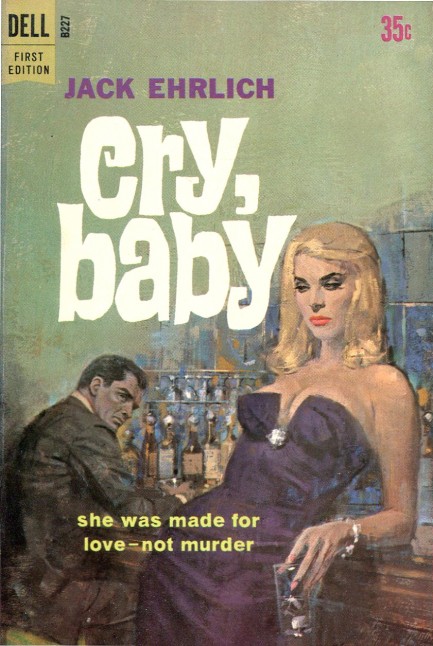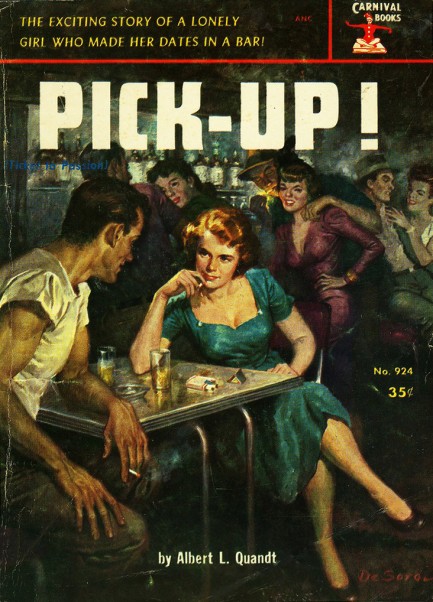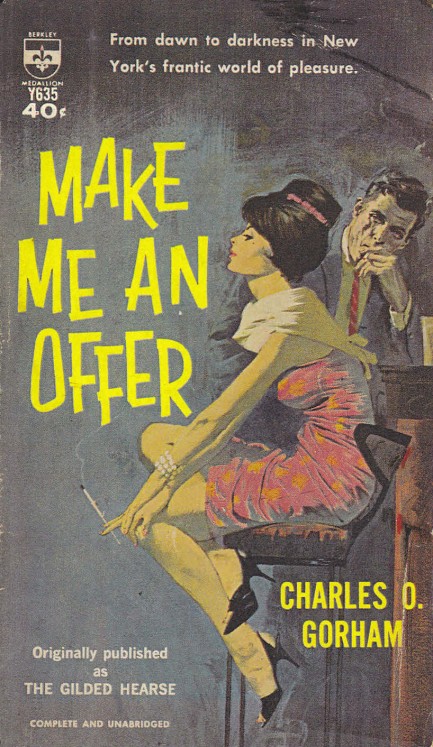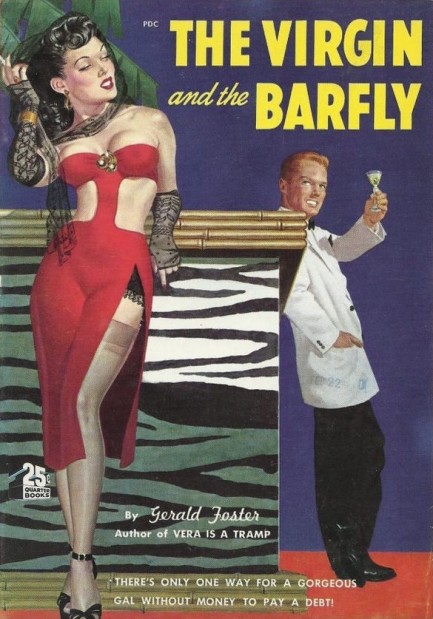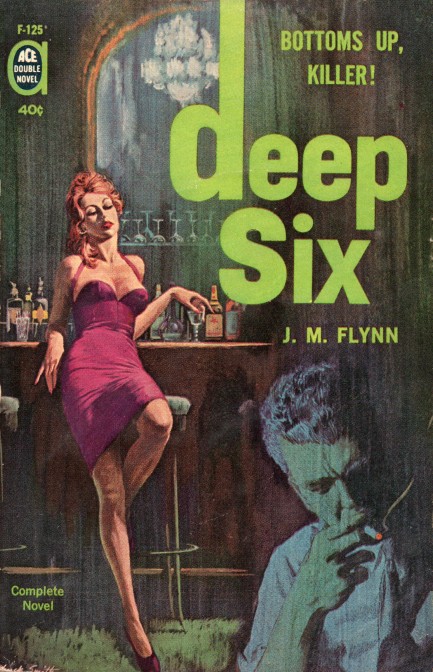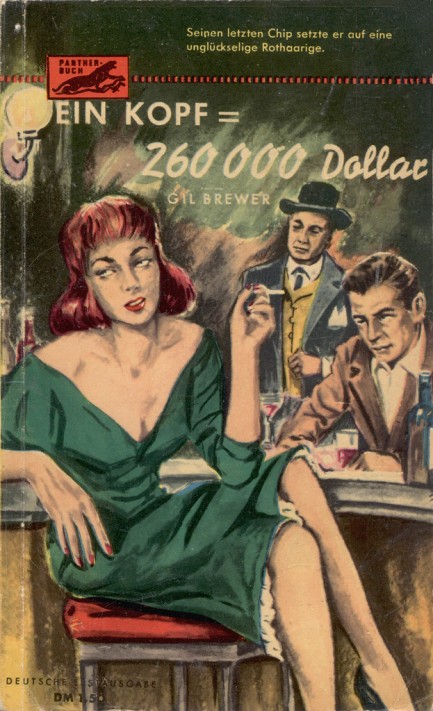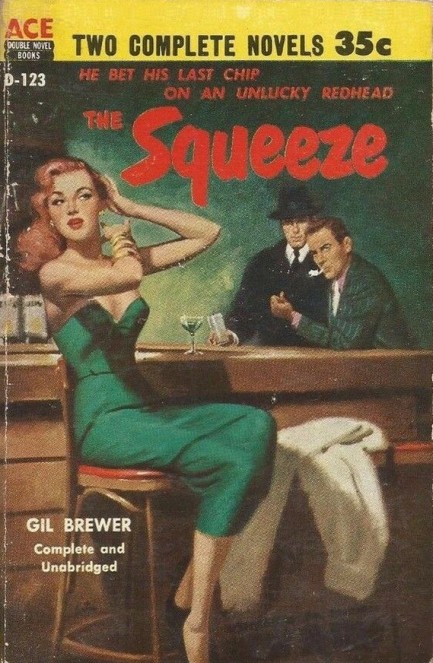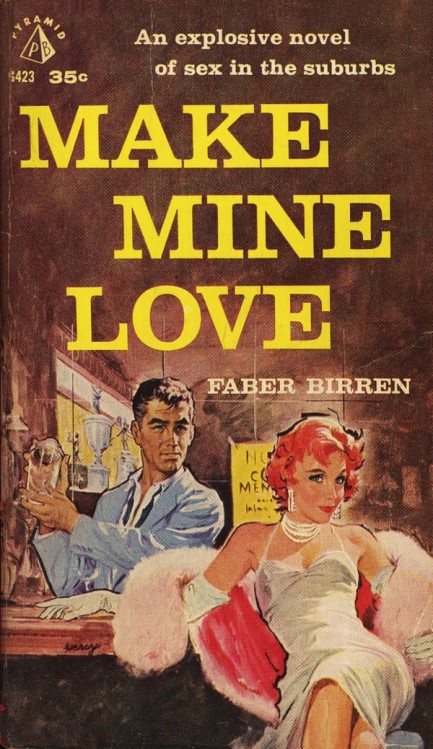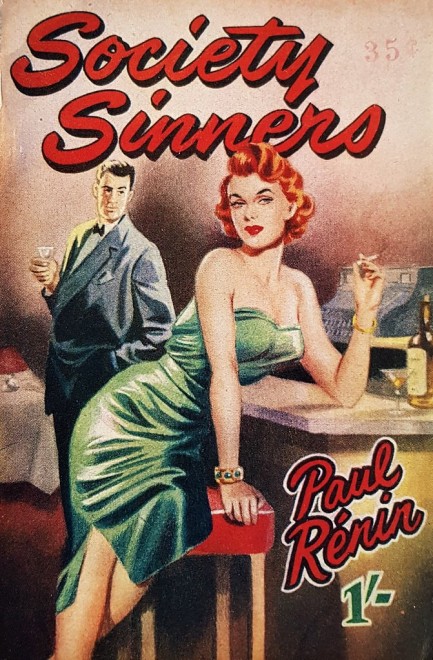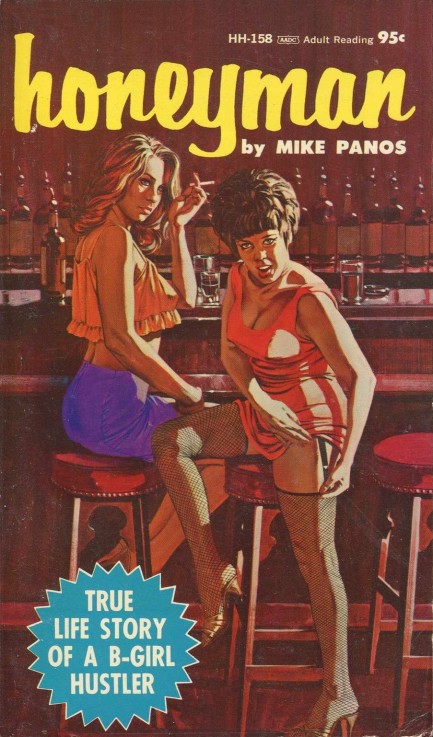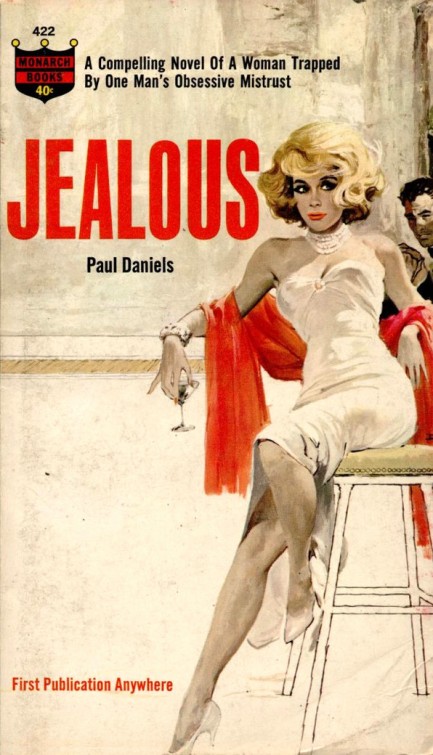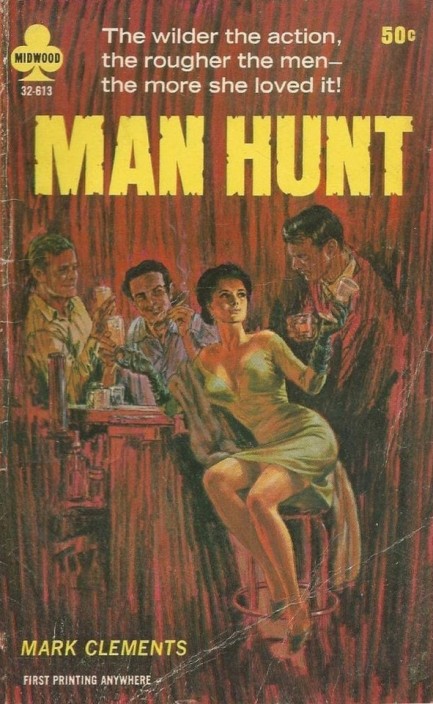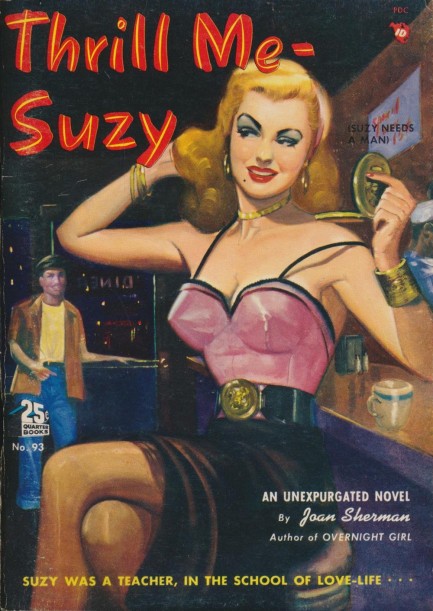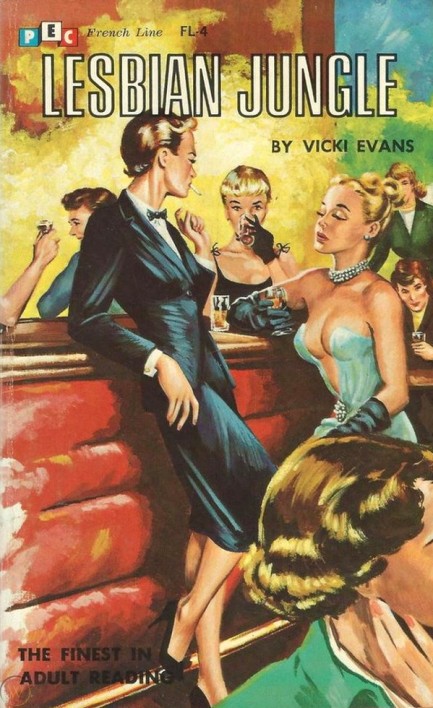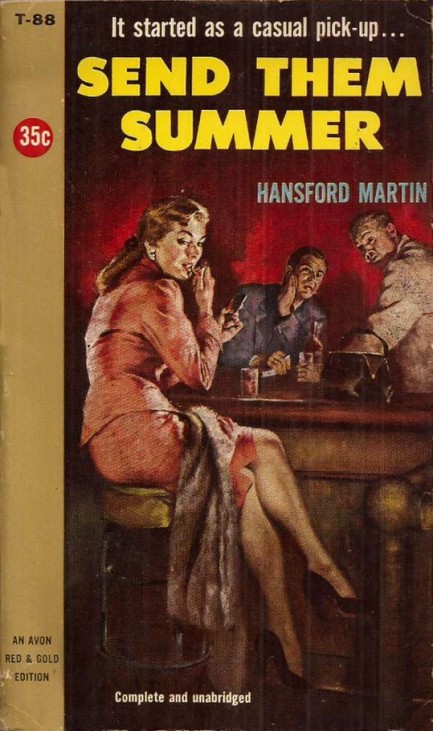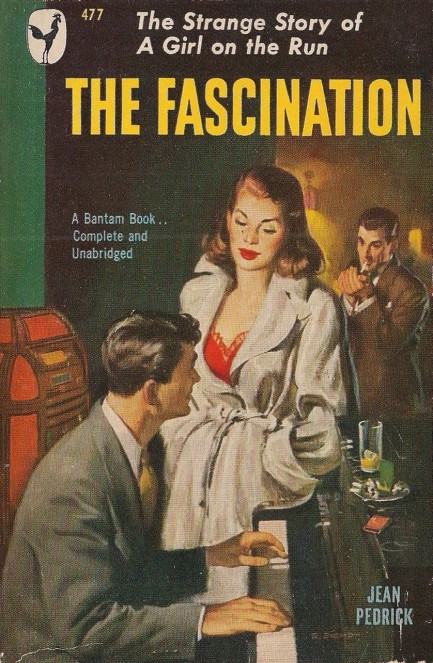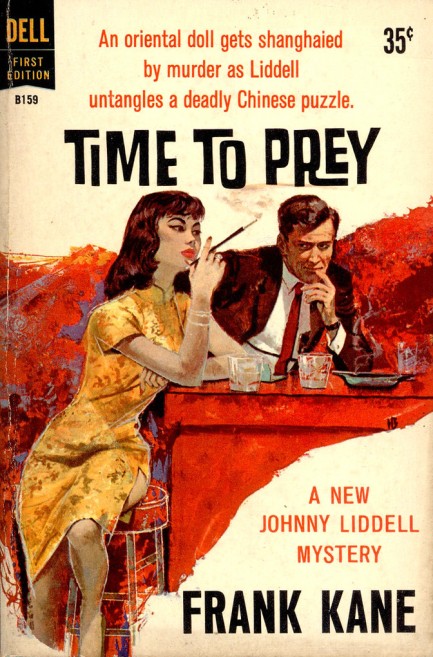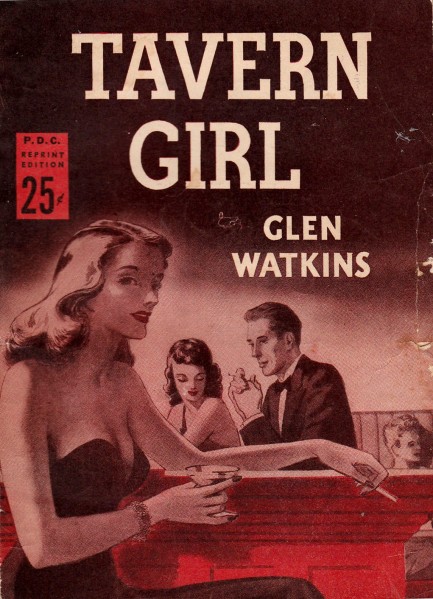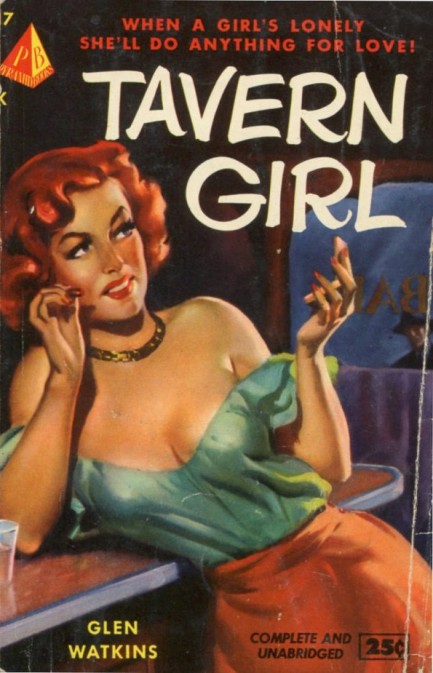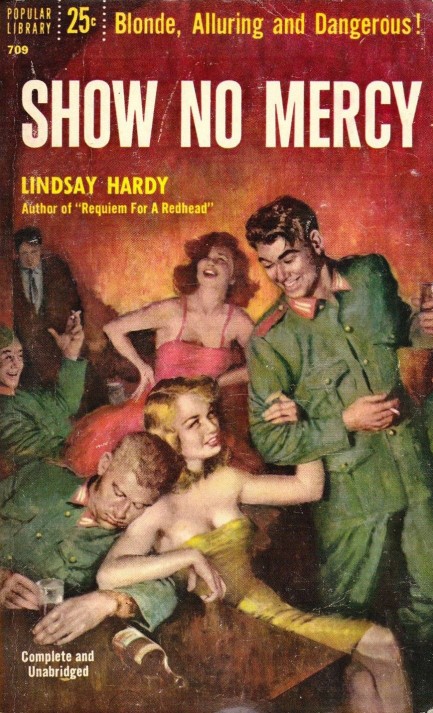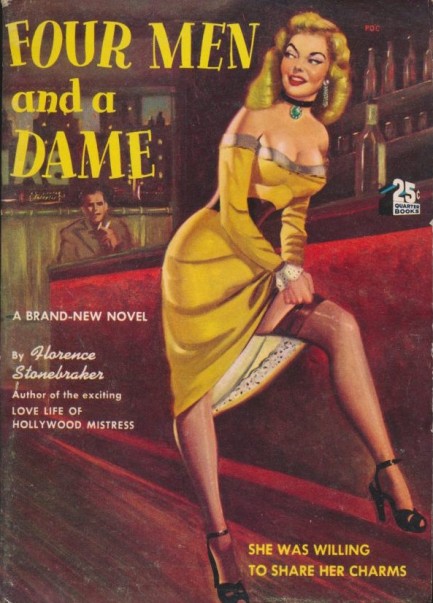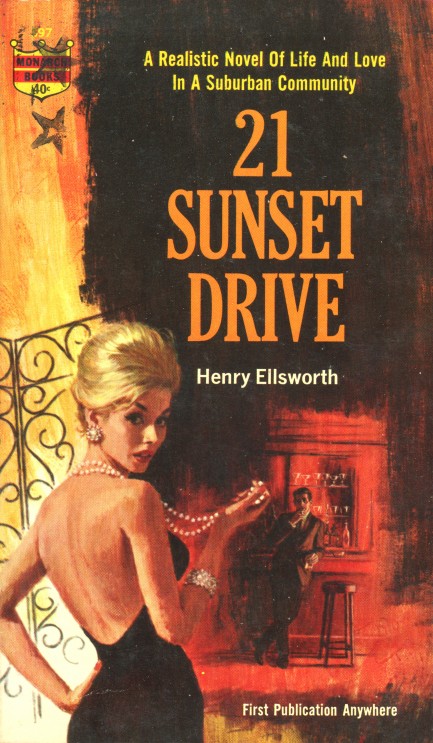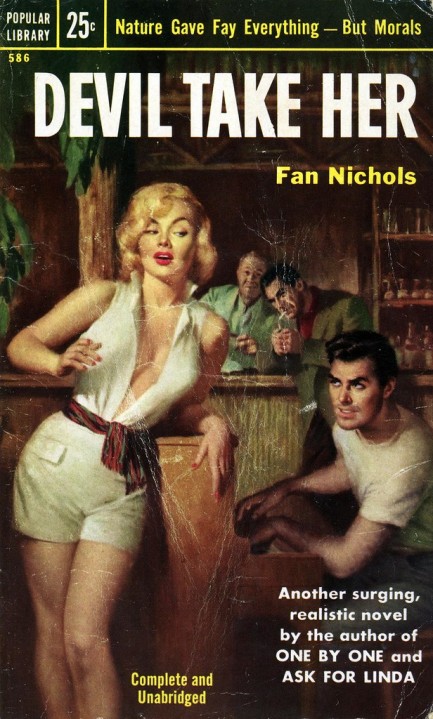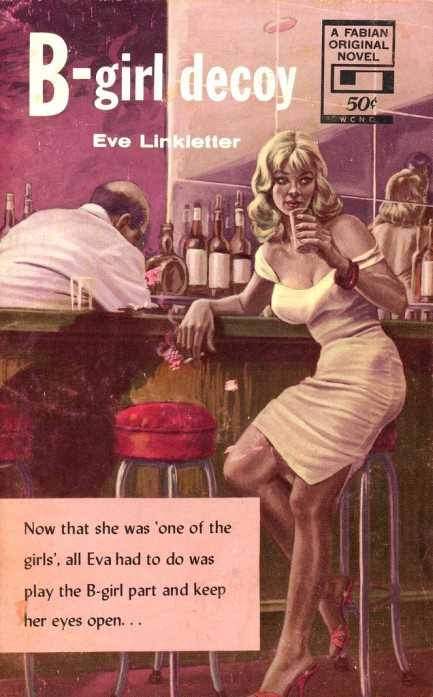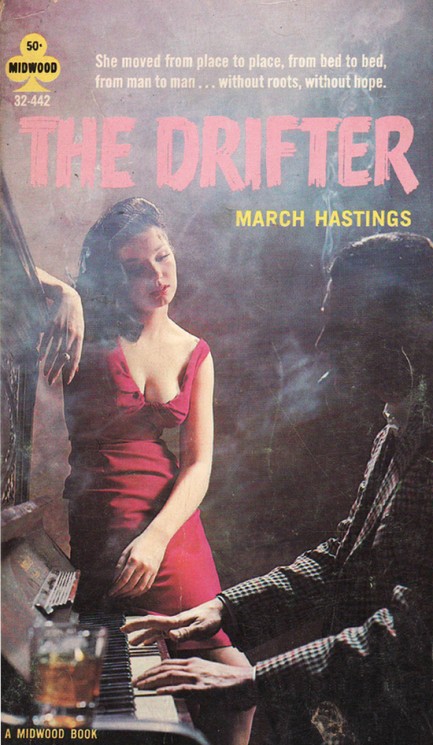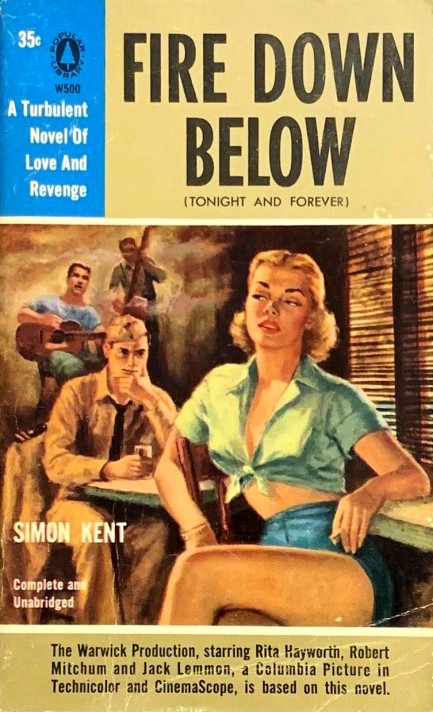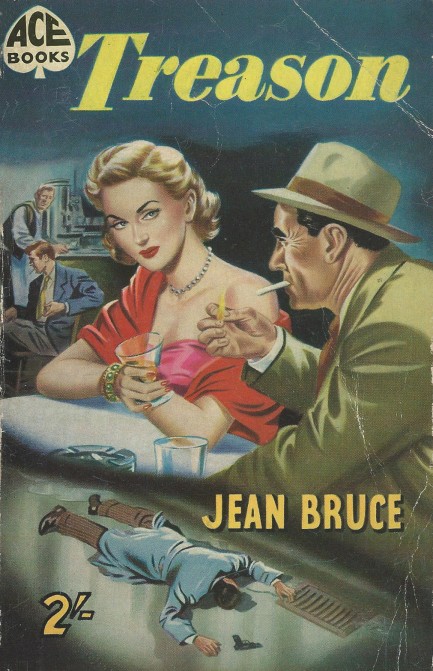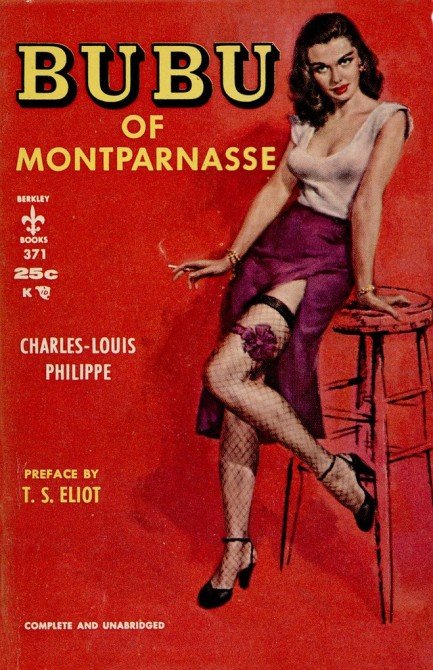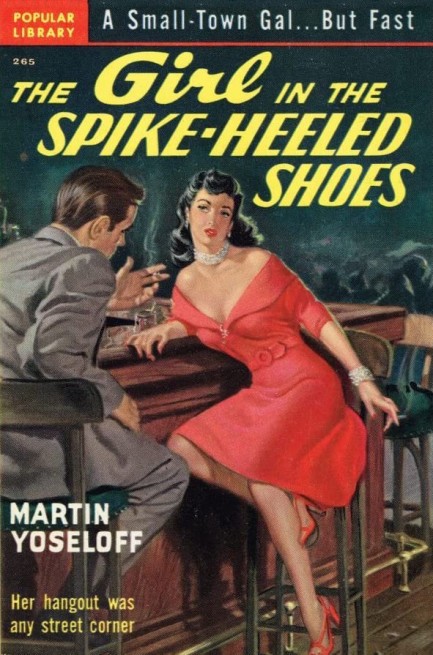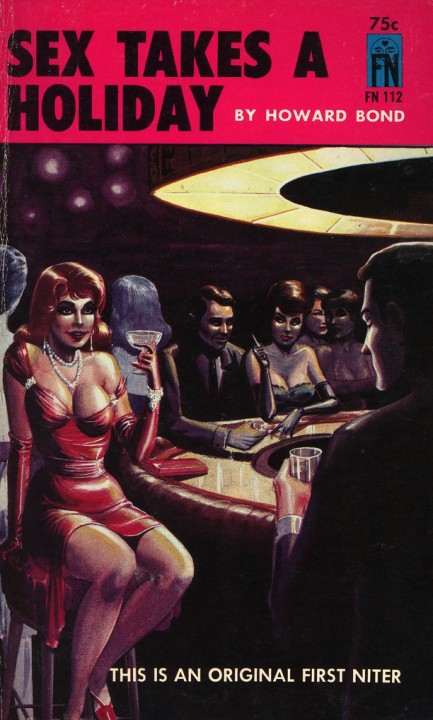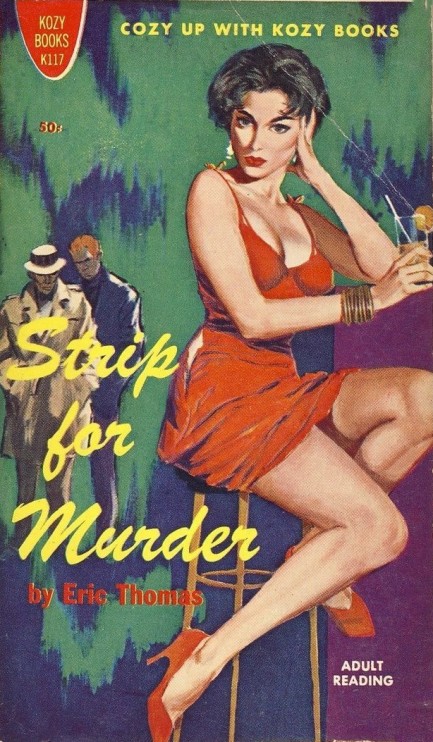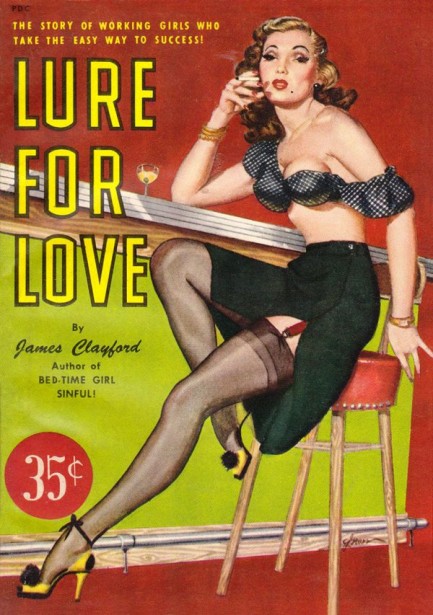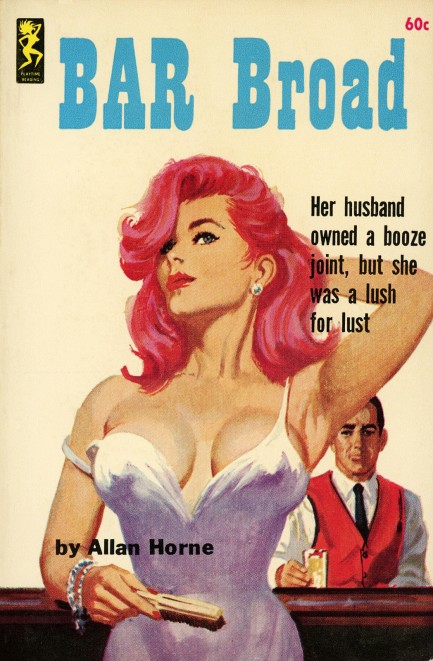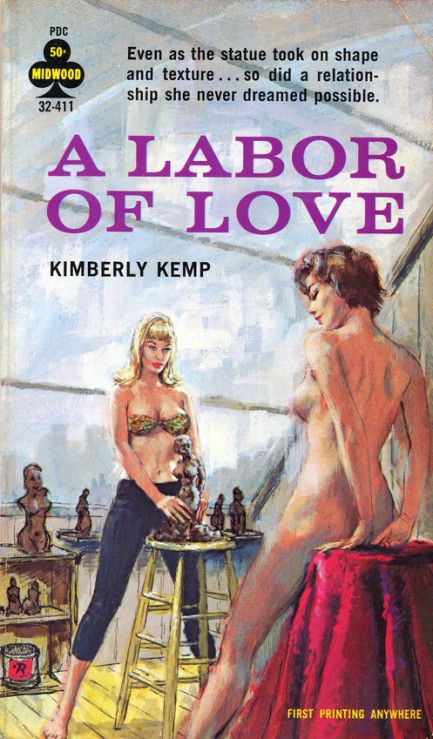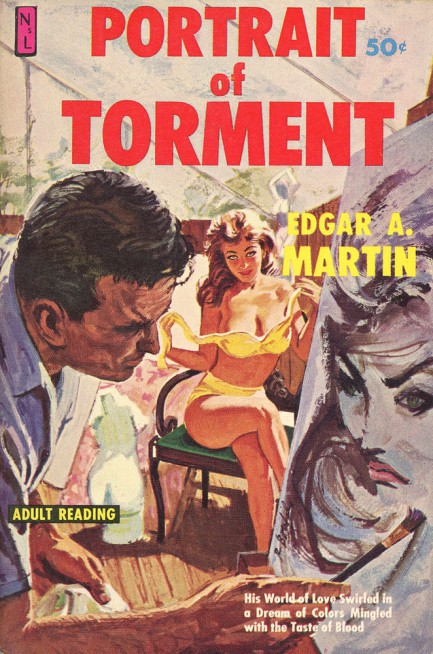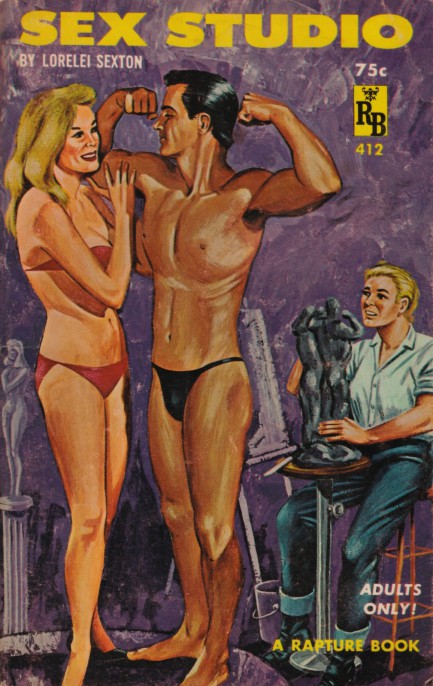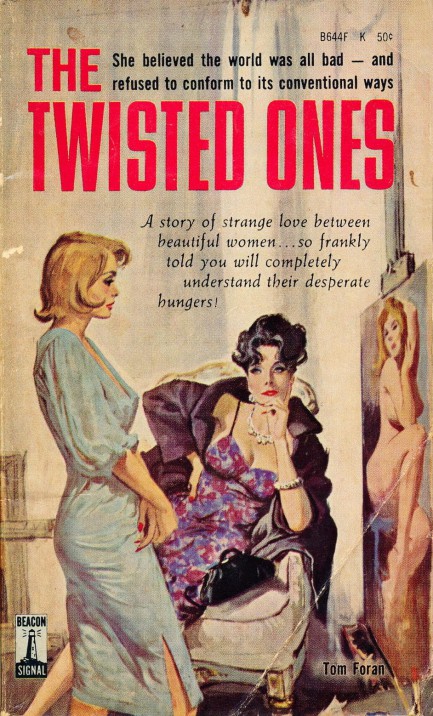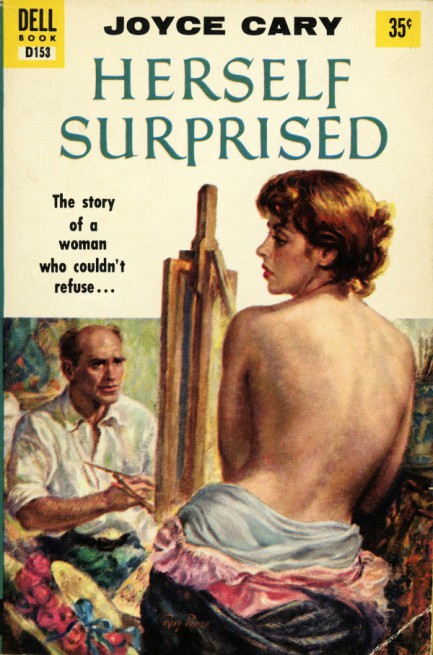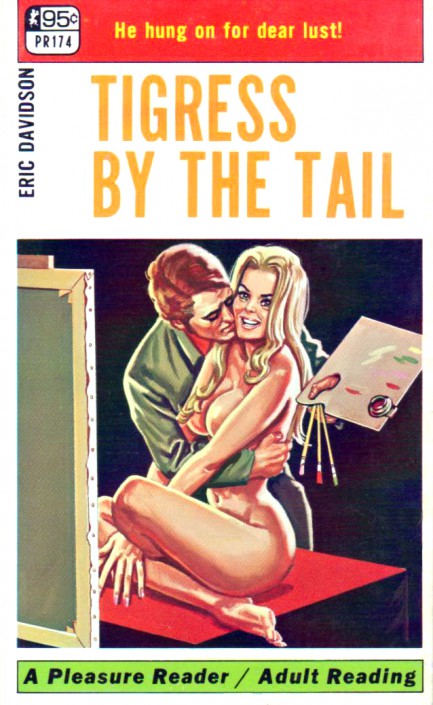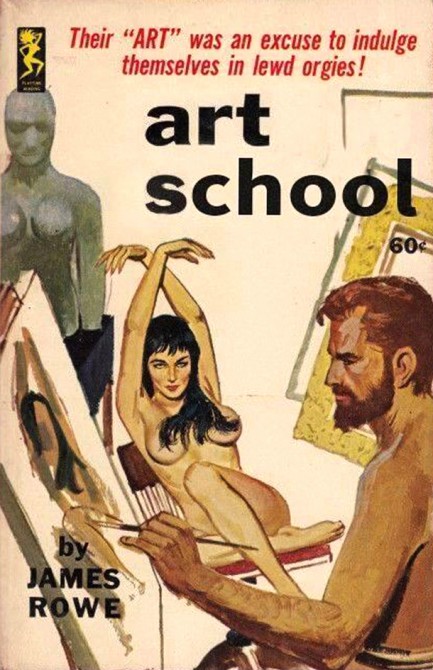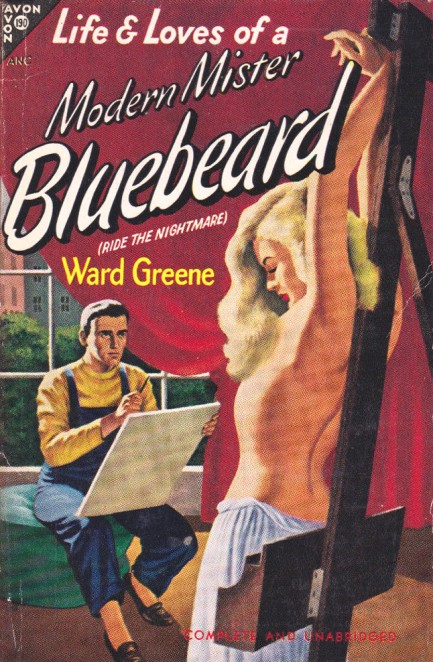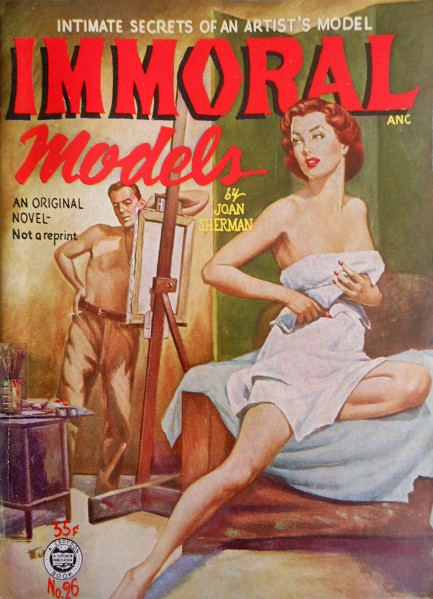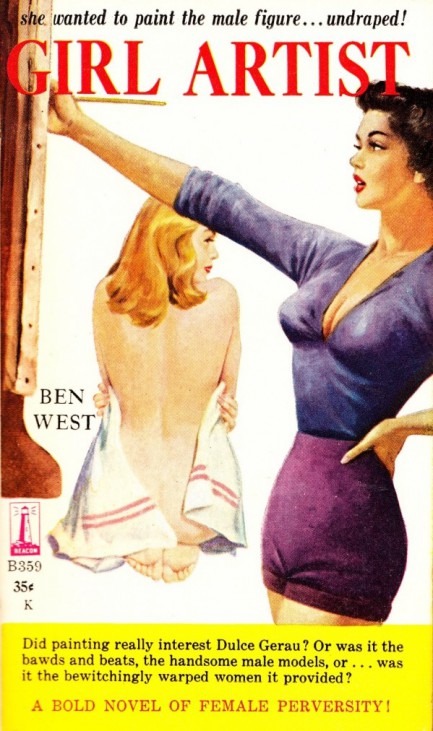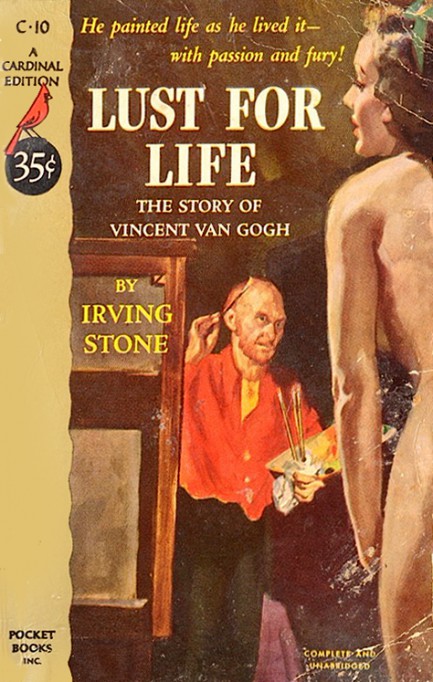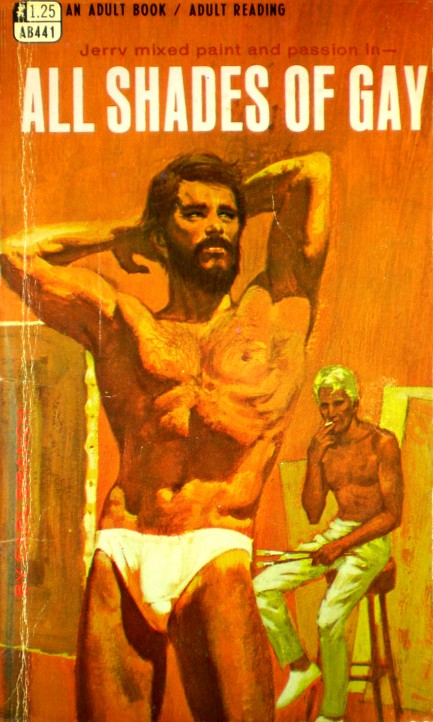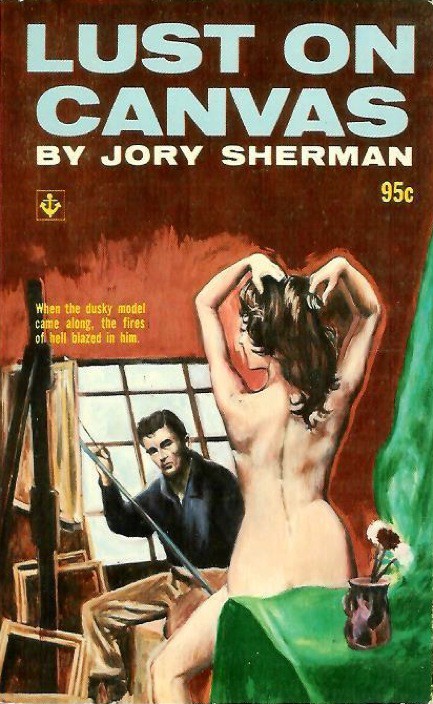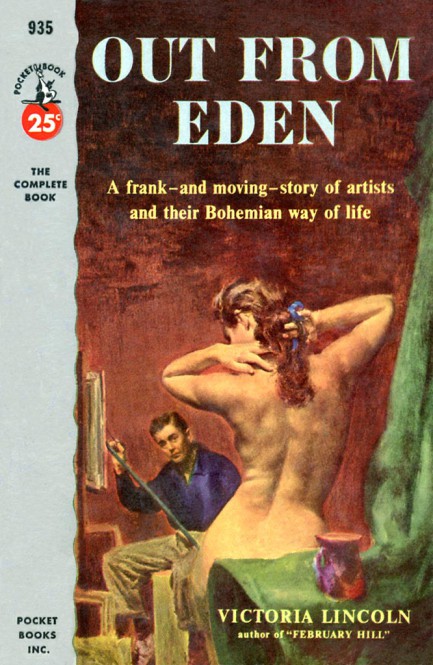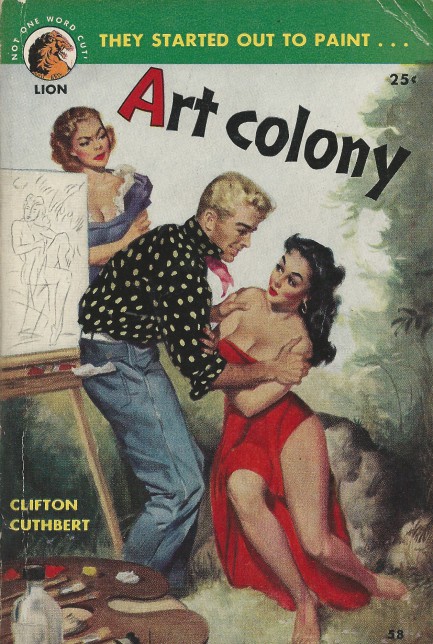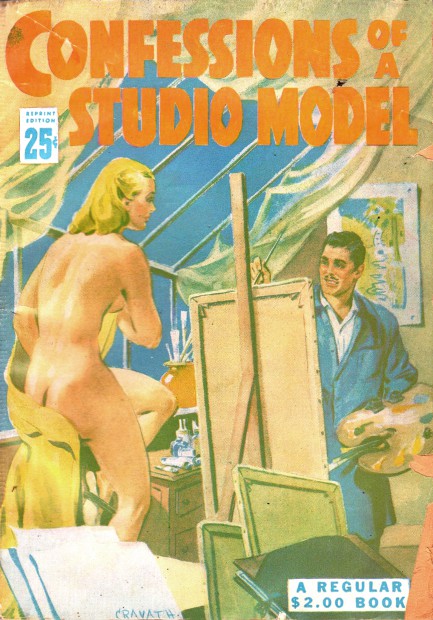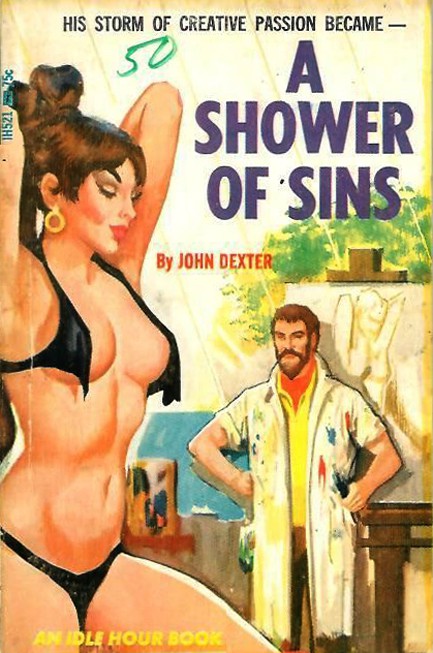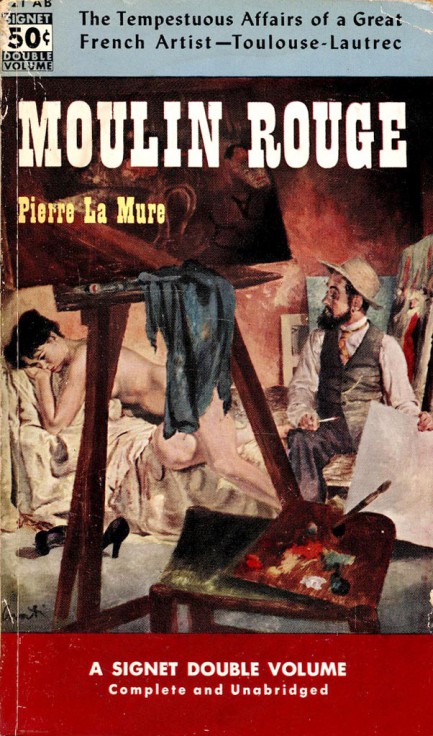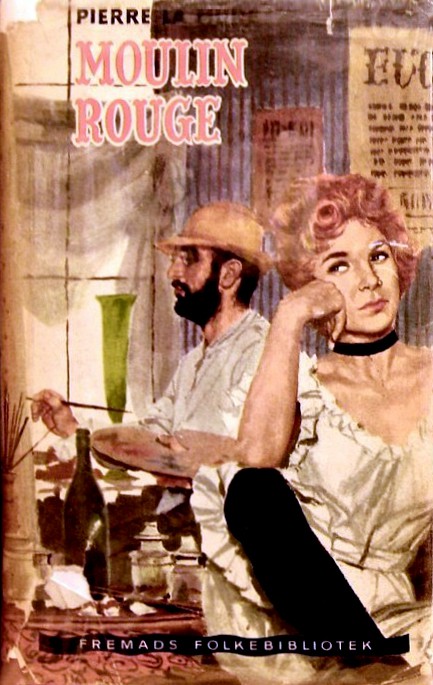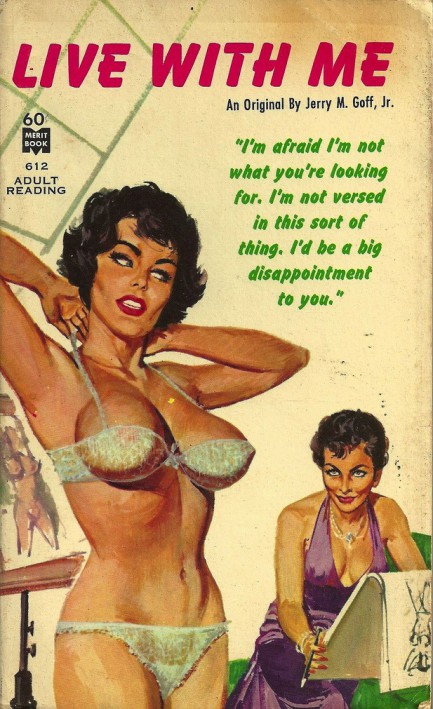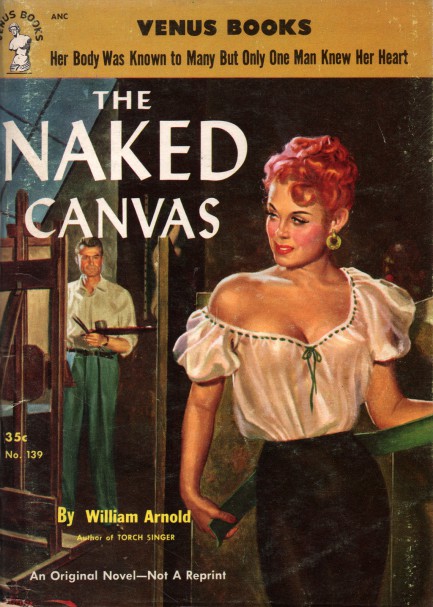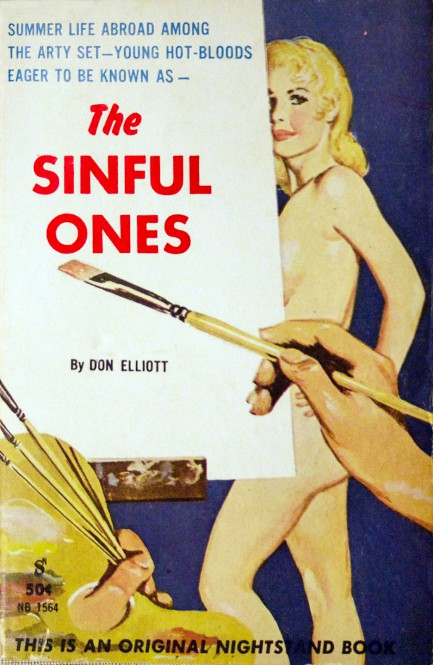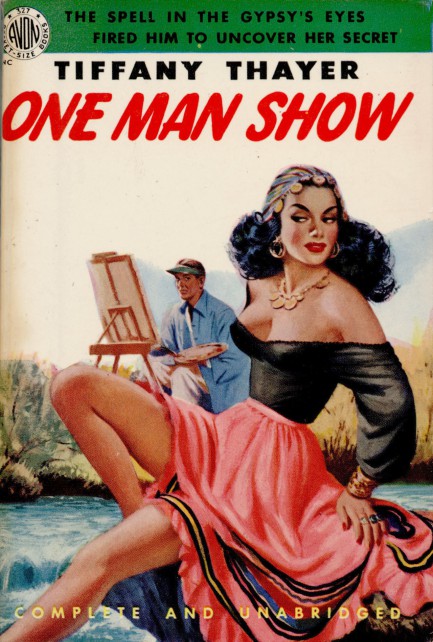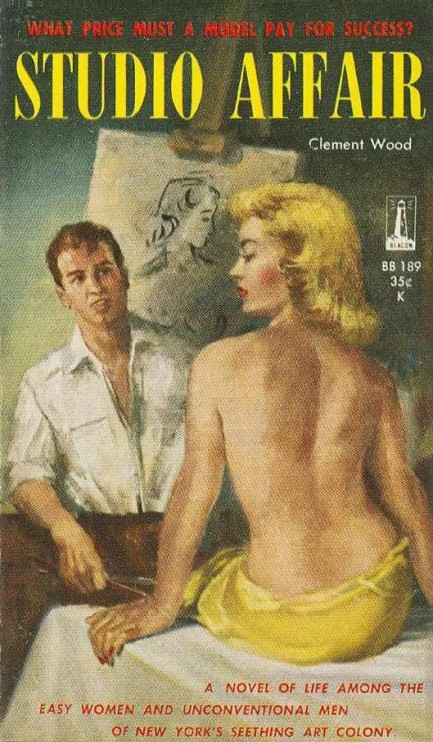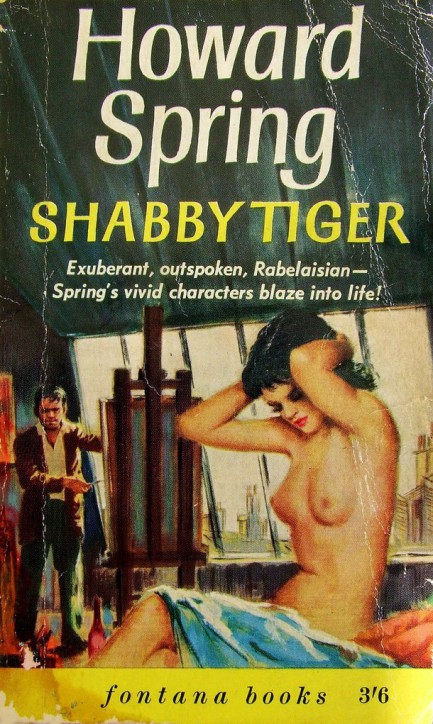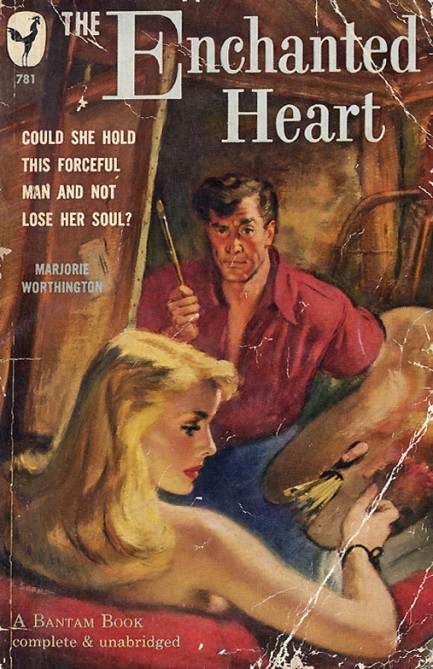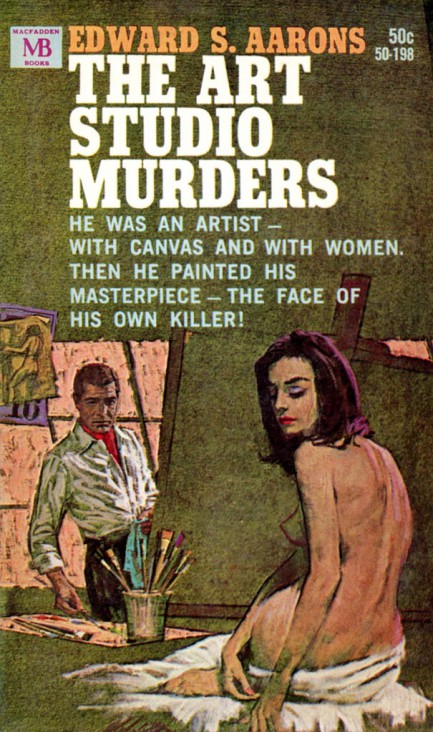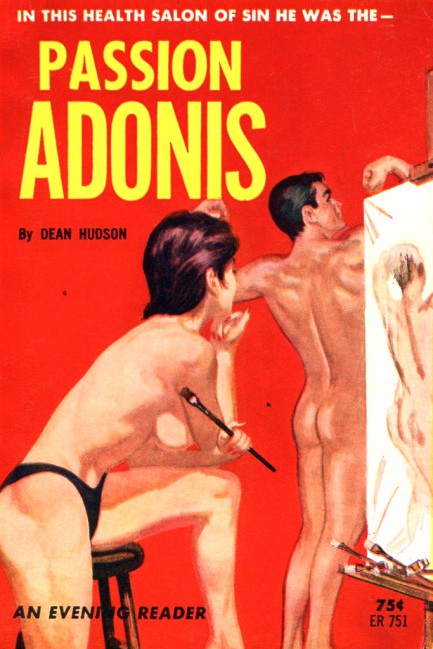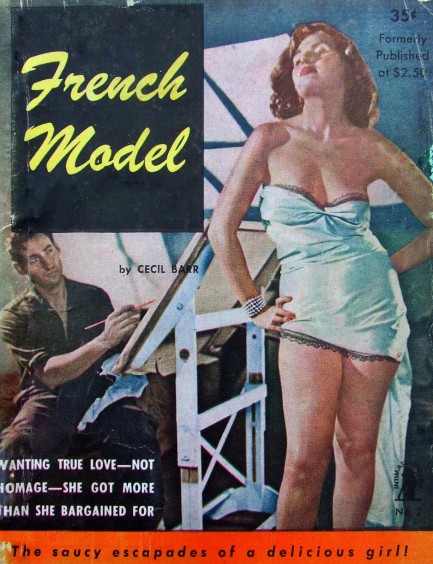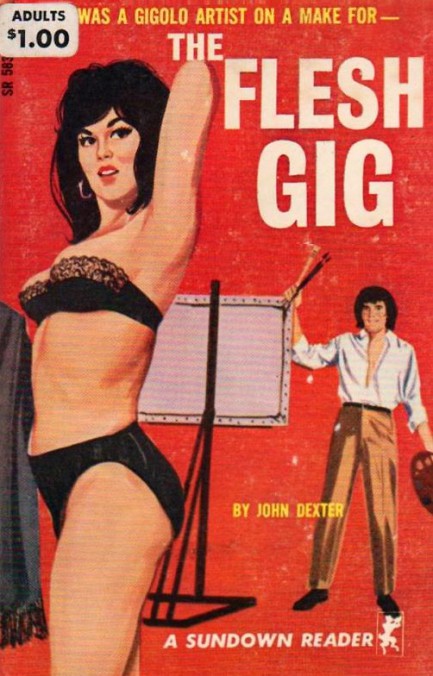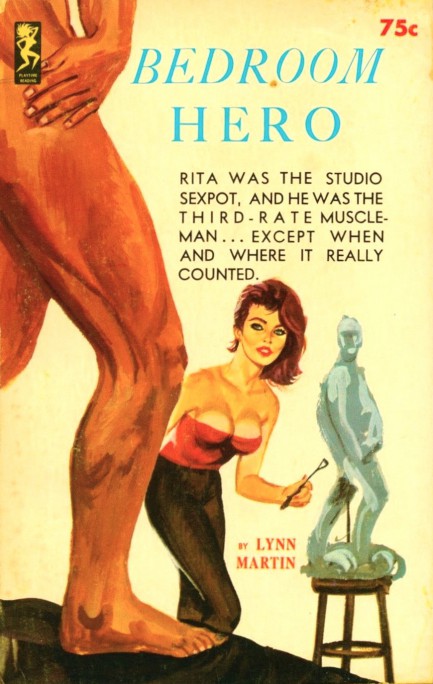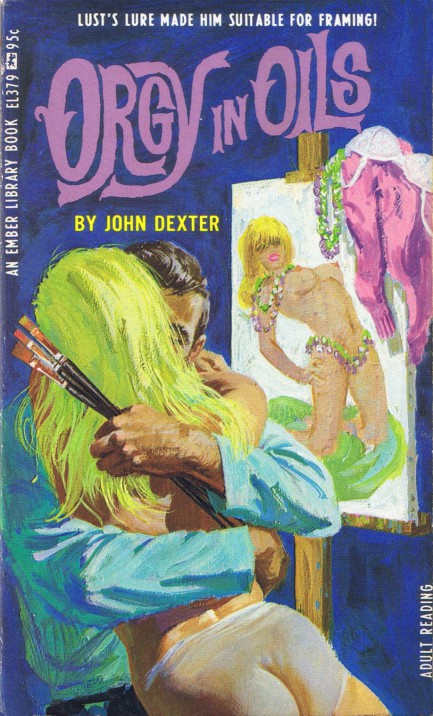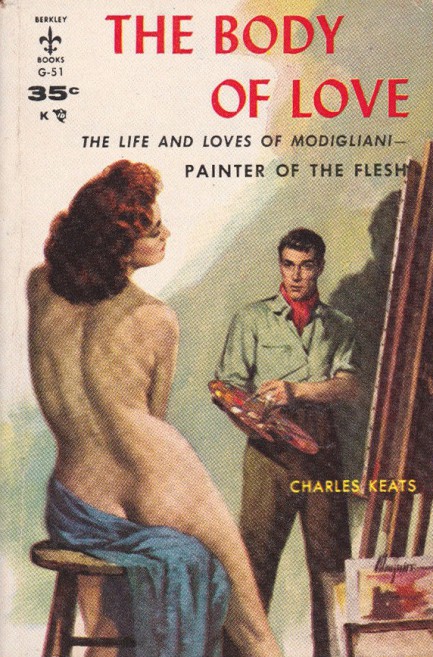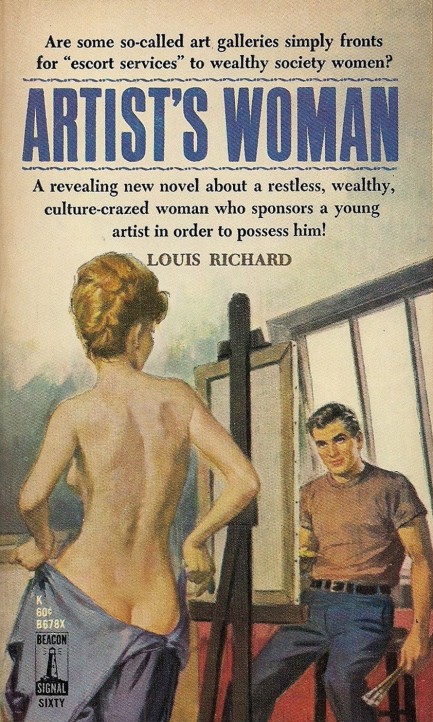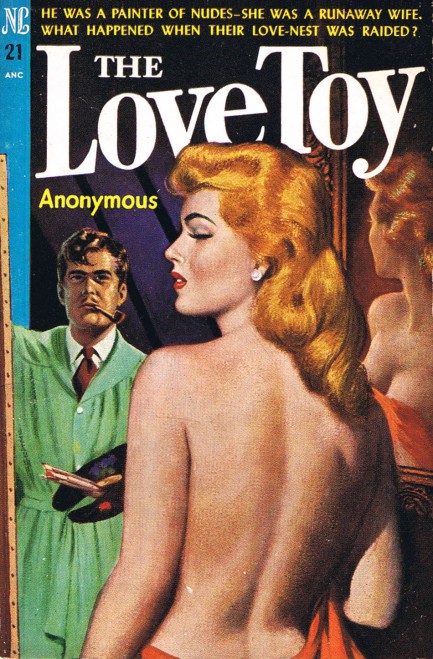 It looks amazing, baby. Er... aaaand should look even better on my lovely wife. Thanks for letting me test it on your neck. 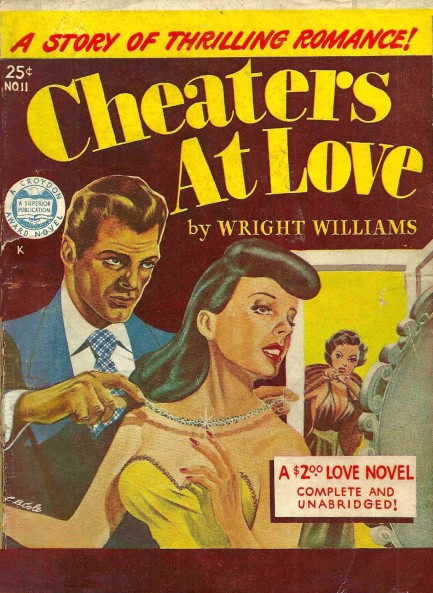
Sometimes when you're caught you're caught. You can try and brazen the moment out, but it usually does no good, at least in mid-century fiction. From there it's just a short distance to mayhem, murder, trials, prison, and all the other fun stuff that makes genre fiction worth reading. From James M. Cain's iconic The Postman Always Rings Twice to J.X. Williams' ridiculous The Sin Scene, infidelity is one of the most reliable and common plot devices. What isn't common is cover art that depicts the precise moment of being caught. Of all the cover collections we've put together, this was the hardest one for which to find examples, simply because there are no easy search parameters. We managed a grand total of sixteen (yes, there's a third person on the cover of Ed Schiddel's The Break-Up—note the hand pushing open the door). The artists here are L.B. Cole, Harry Schaare, Tom Miller, Bernard Safran, and others. And we have thre more excellent examples of this theme we posted a while back. Check here, here, and here.
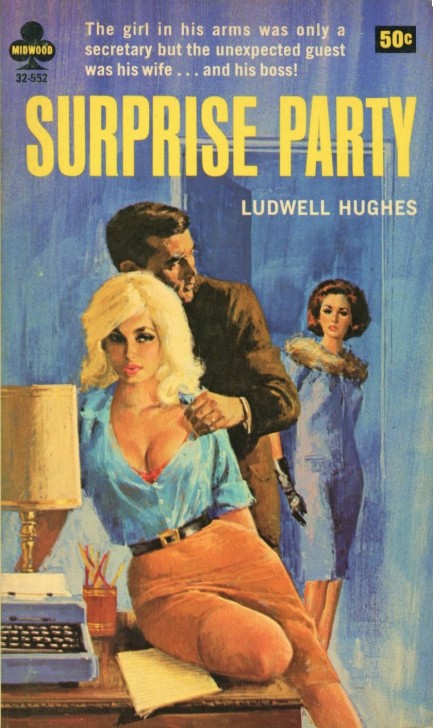 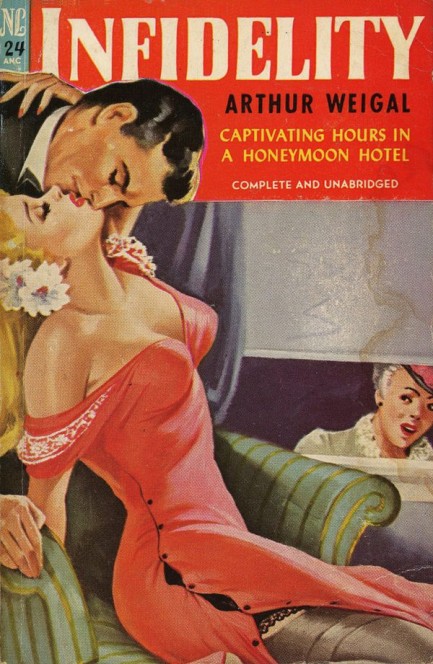 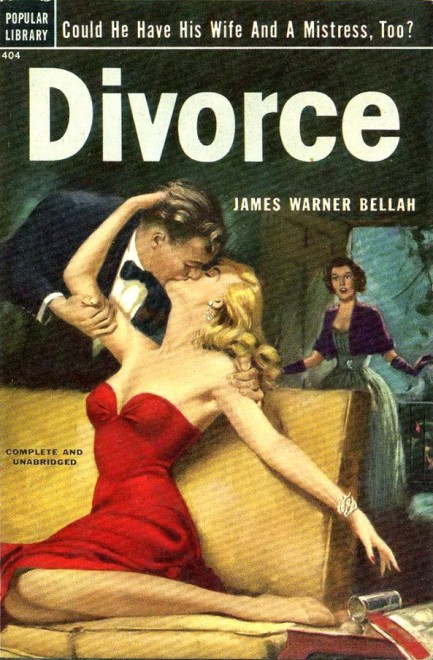 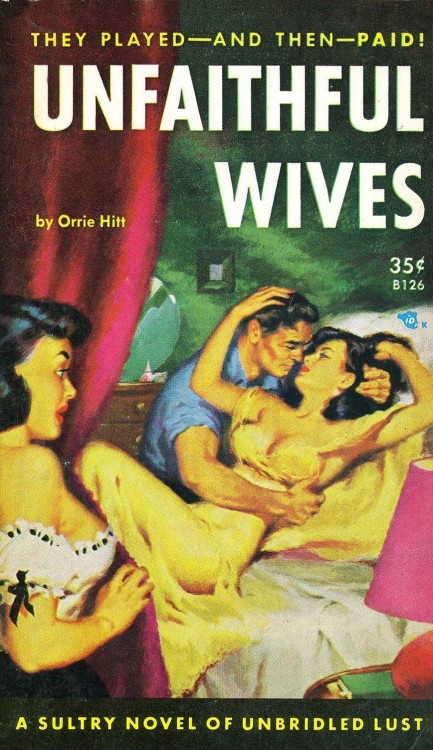 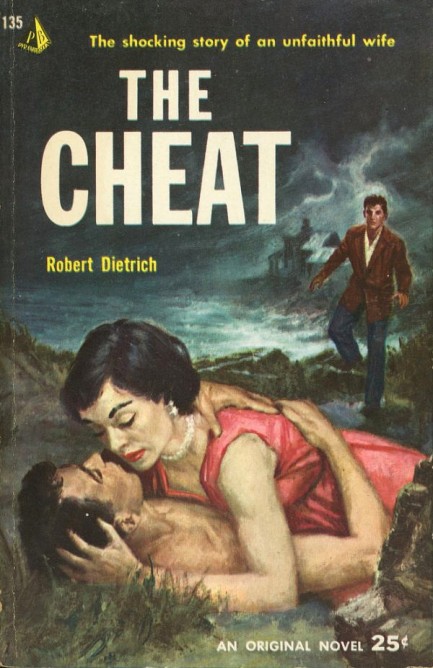 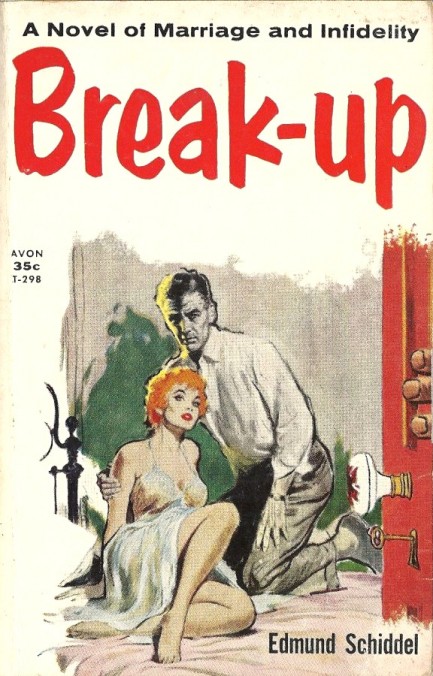 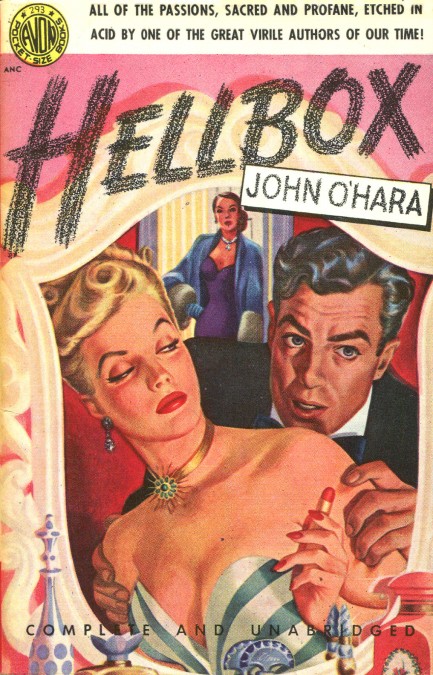 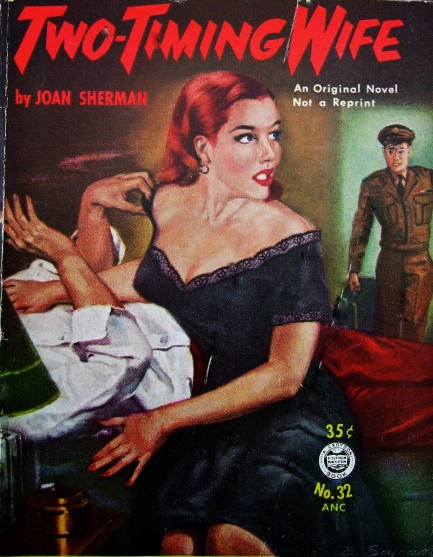 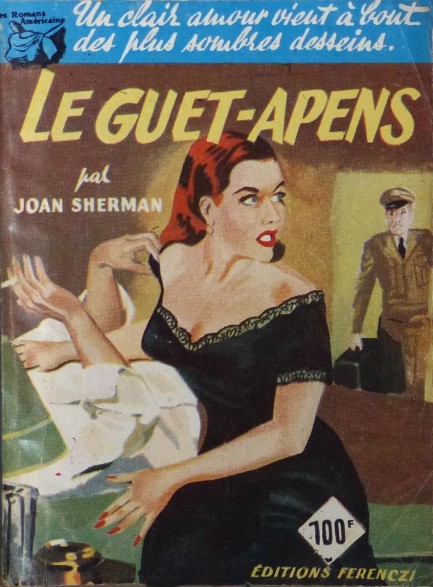 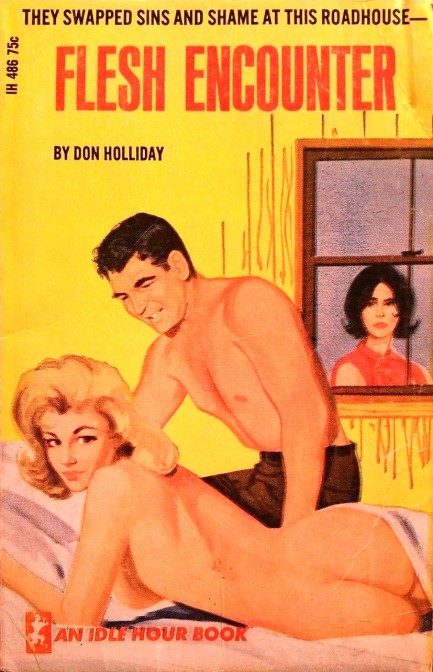 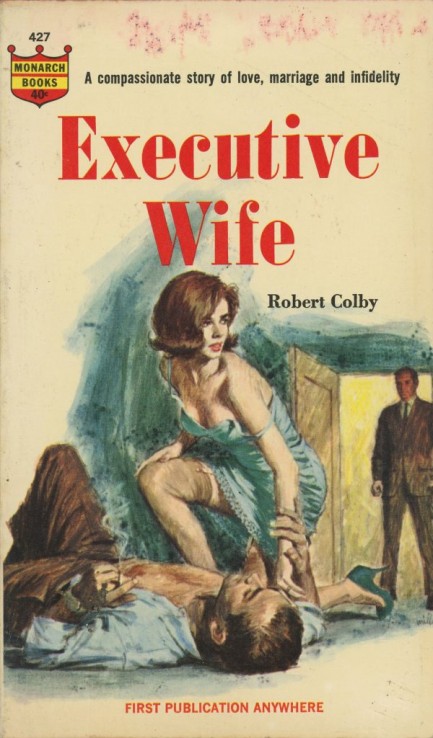 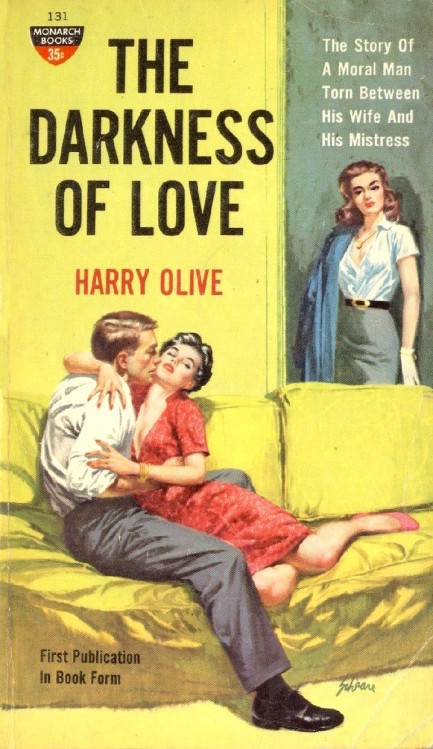 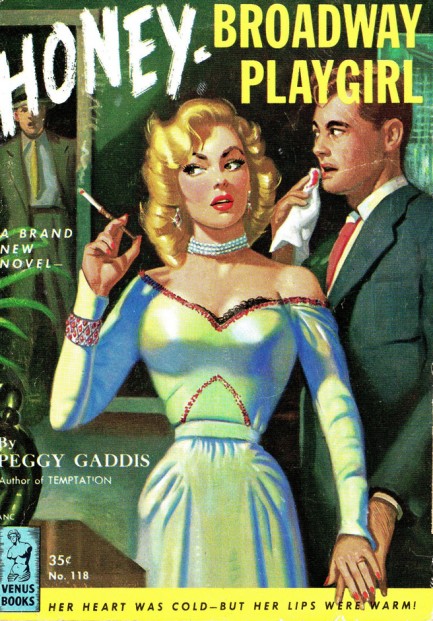 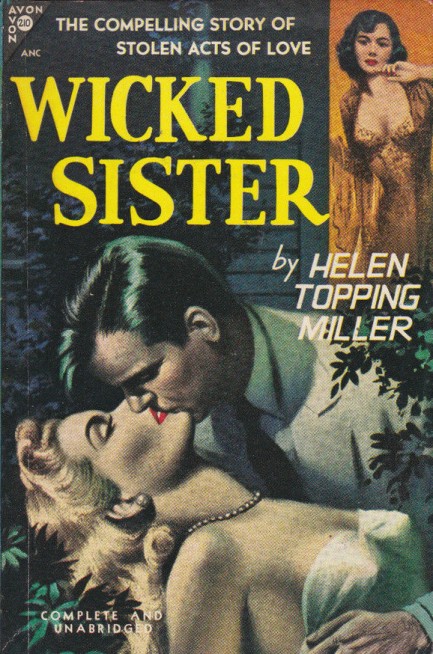 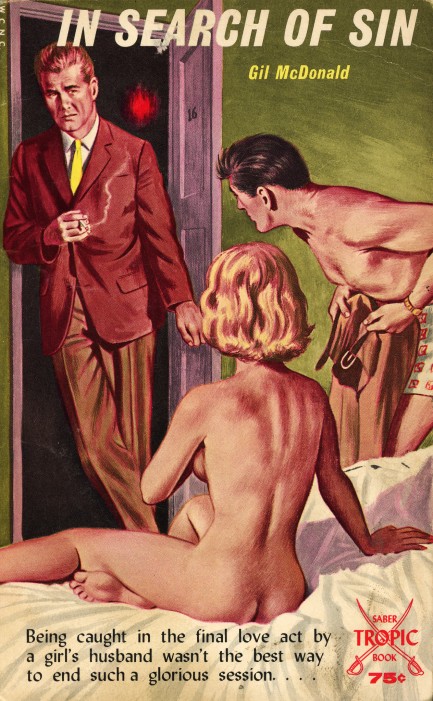
 What’s in a name? Everything, if it’s the title of a vintage paperback. 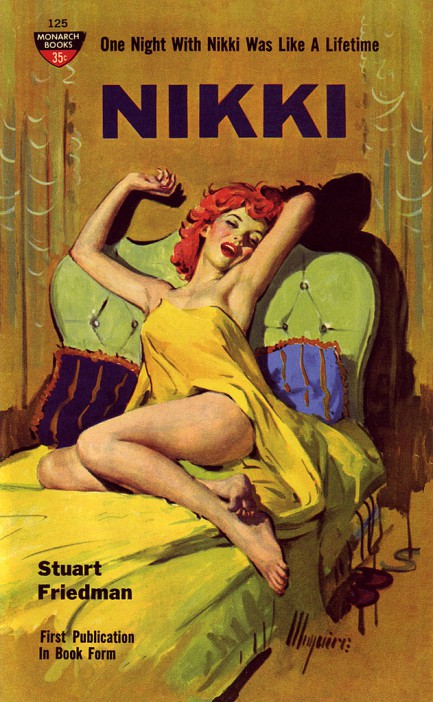 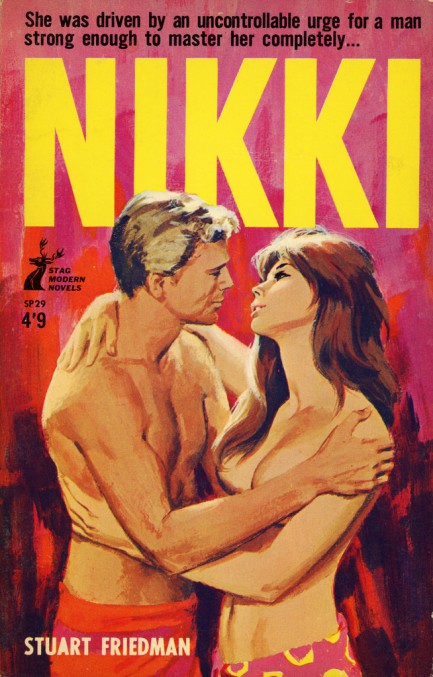
Above and below you will find a large collection of pulp, post-pulp, and sleaze paperback fronts that have as their titles a character’s first name. There are hundreds of examples of these but we stopped at thirty-two. The collection really highlights, more than others we’ve put together, how rarely vintage paperback art focuses on male characters. The prose is virtually all male-centered and male-driven, of course, but because the mid-century paperback market was male-driven too, that meant putting women on the covers to attract the male eye. We tell our girlfriends this all the time, but they still think we just don’t bother looking for male-oriented vintage art. But we do. For this collection we found two novels that have male characters’ names as their titles, and we looked pretty hard. If we had to guess, we’d say less than 5% of all pulp art is male-oriented. In any case, the illustrations come from the usual suspects—Barye Phillips, Robert McGinnis, Jef de Wulf, Paul Rader, et al., plus less recognized artists like Doug Weaver. Thanks to all the original uploaders for these.
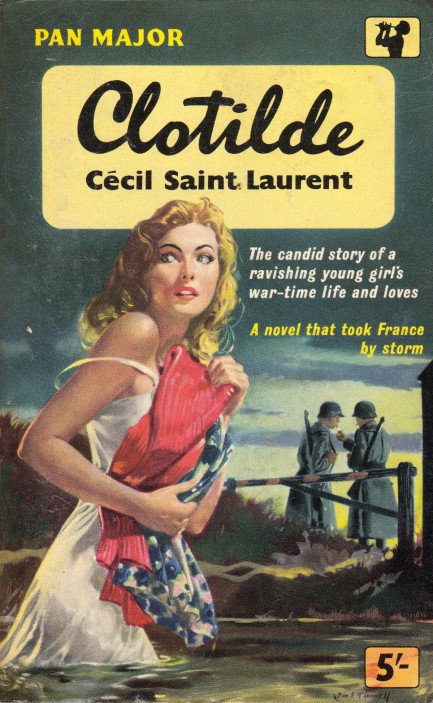 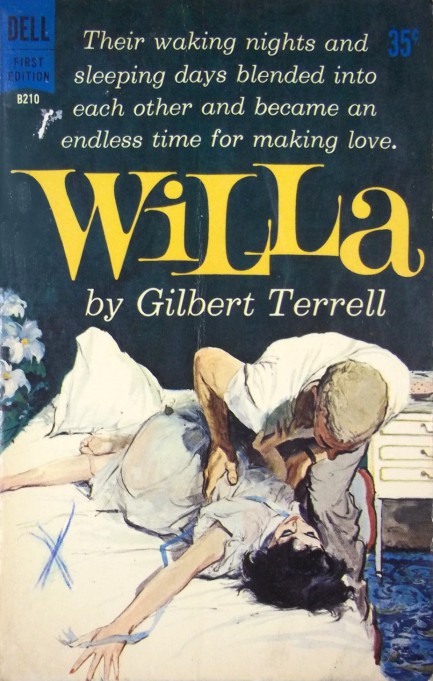 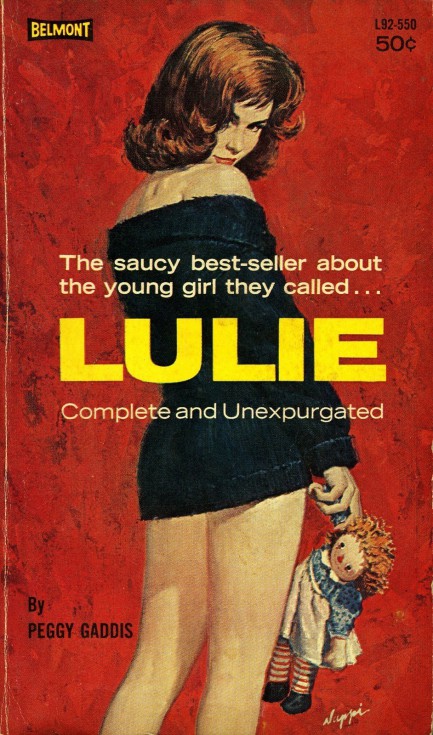 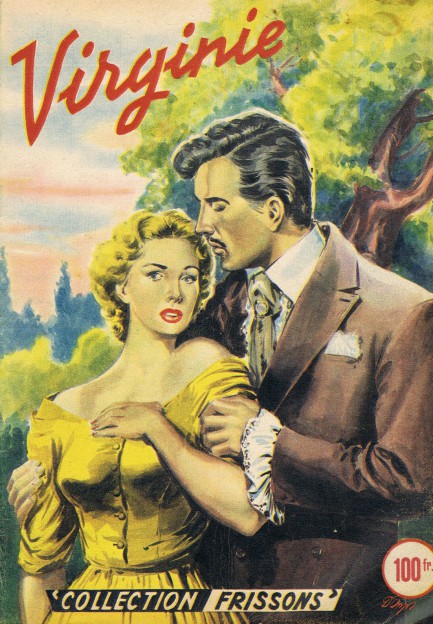 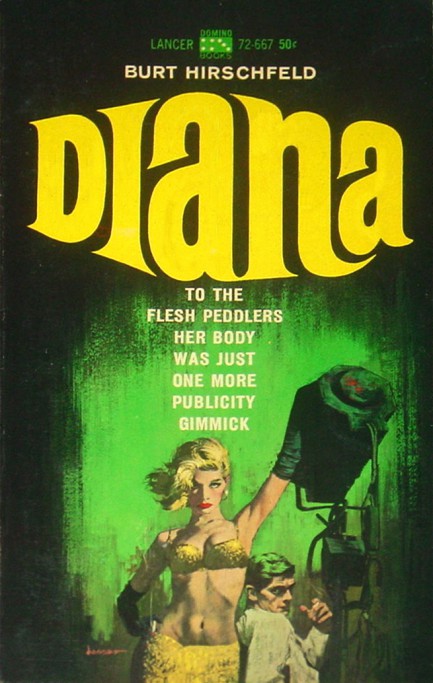 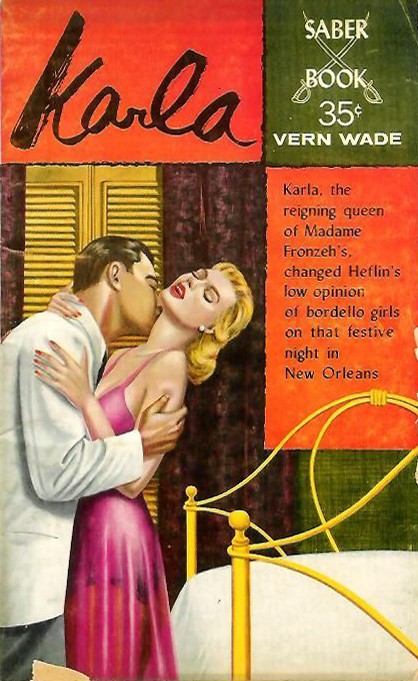 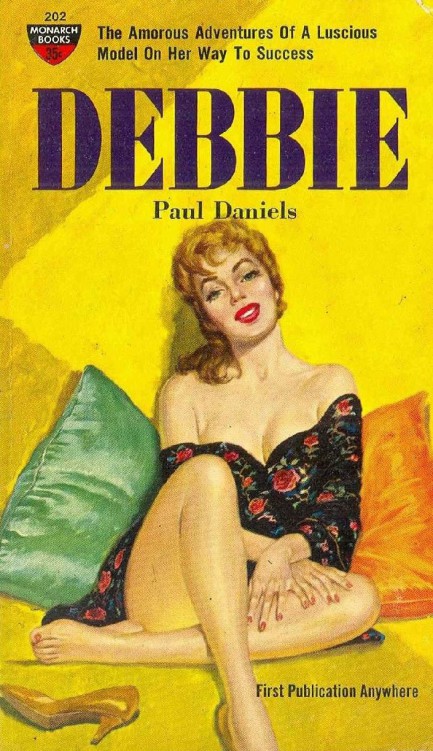 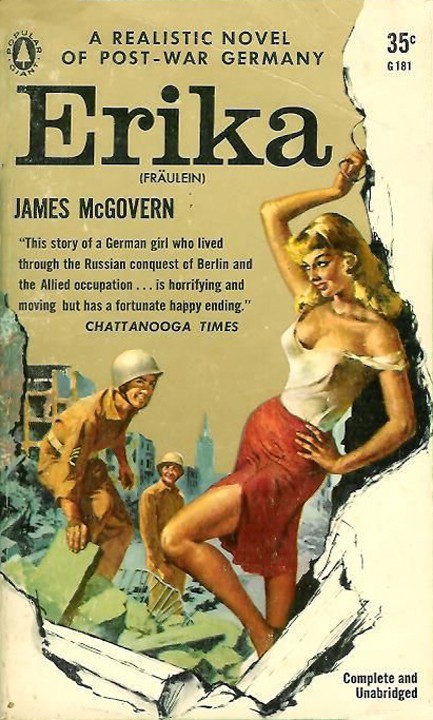 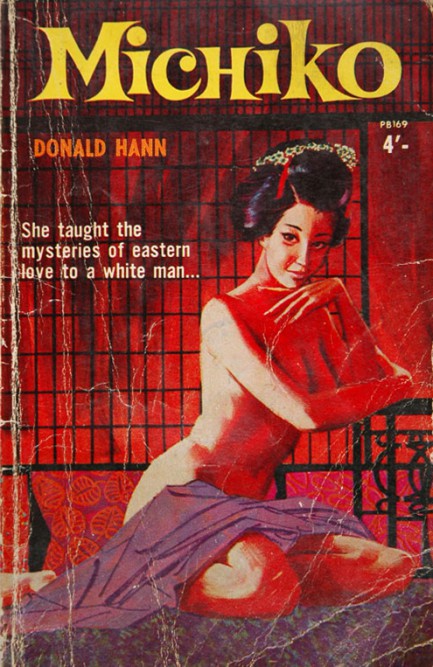 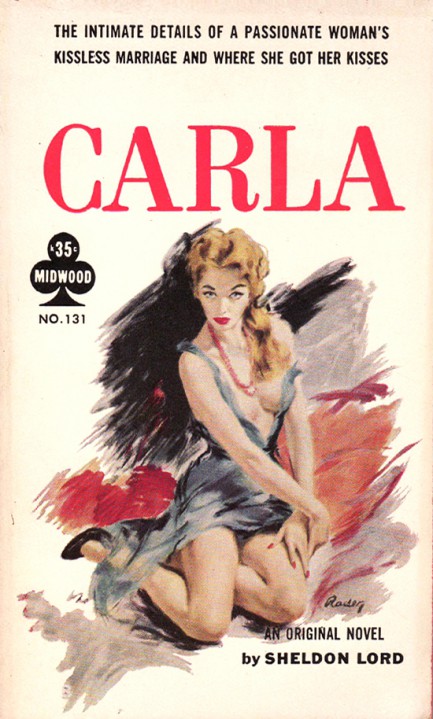 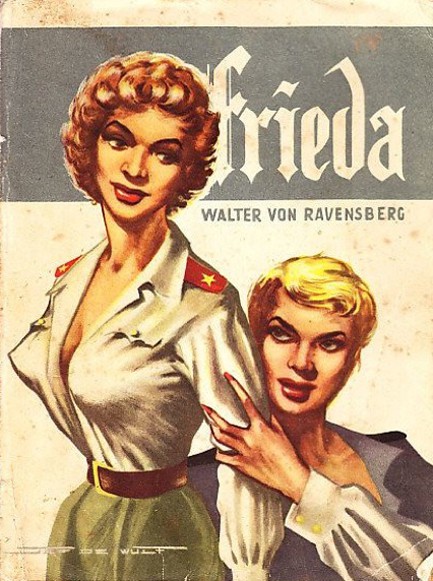 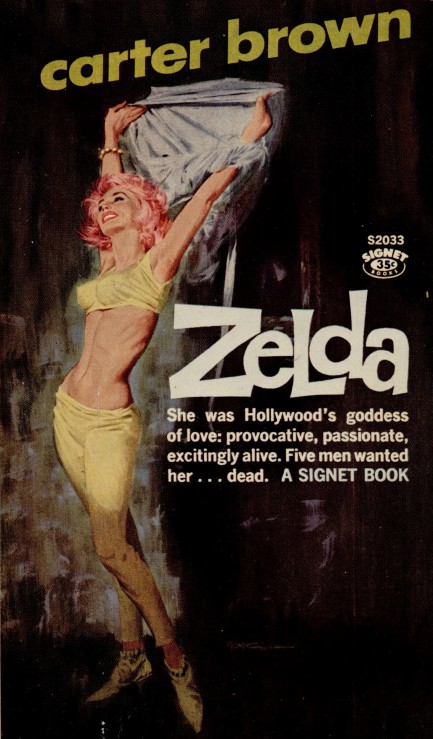 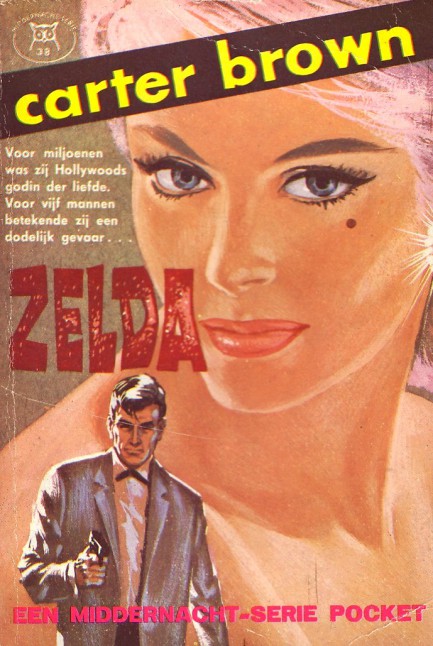 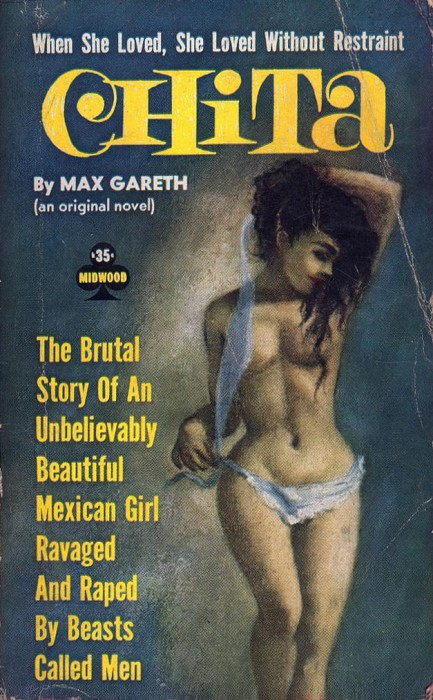 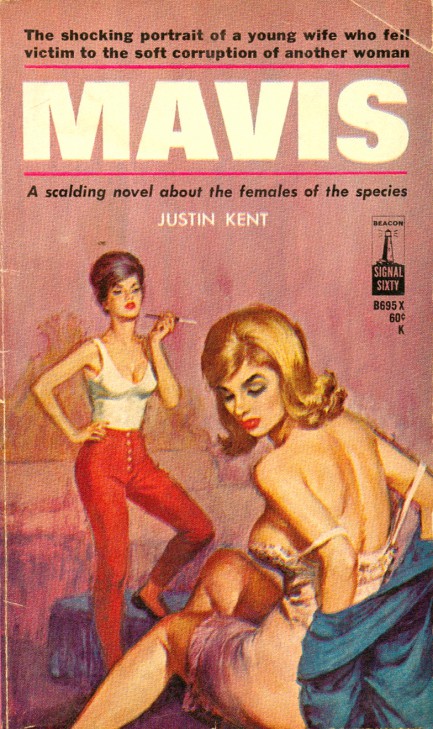 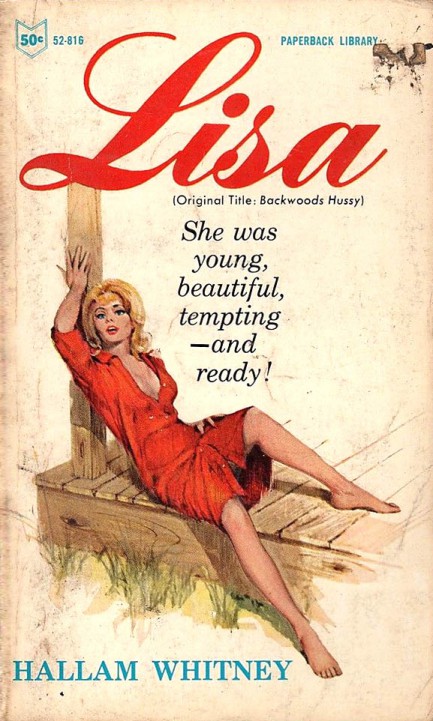 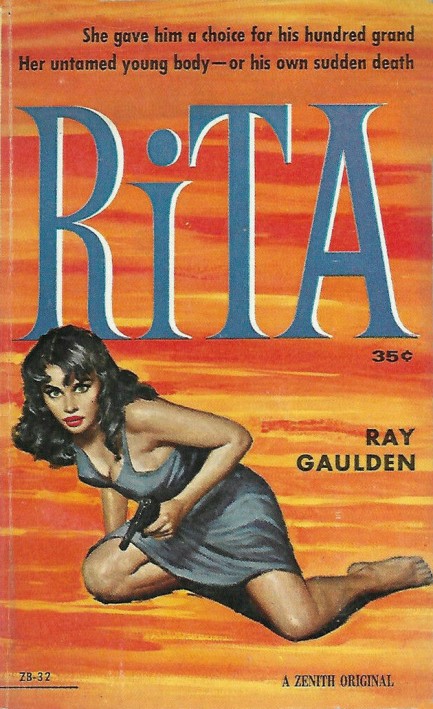 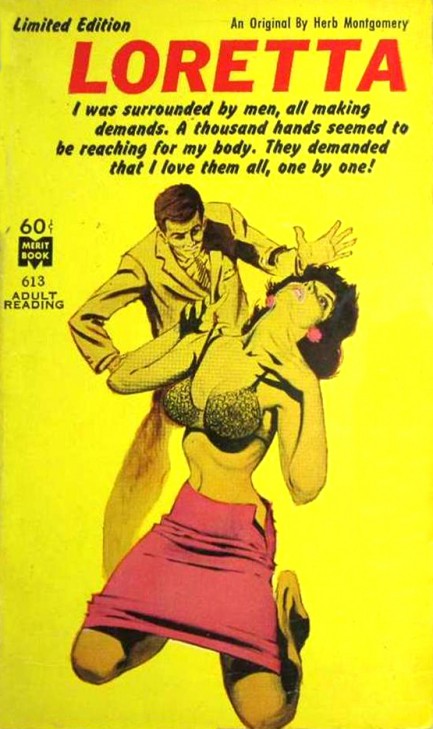 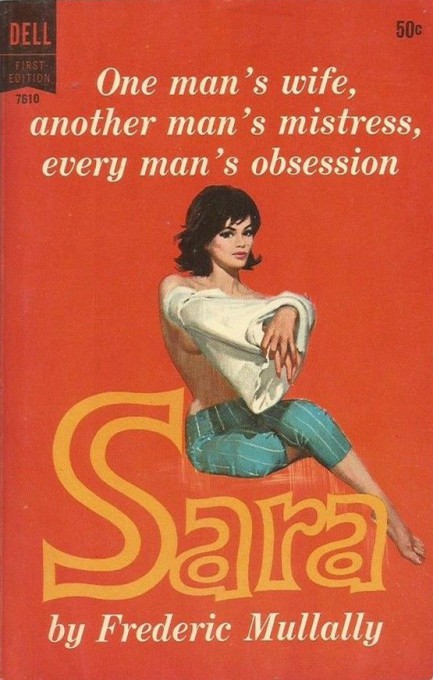 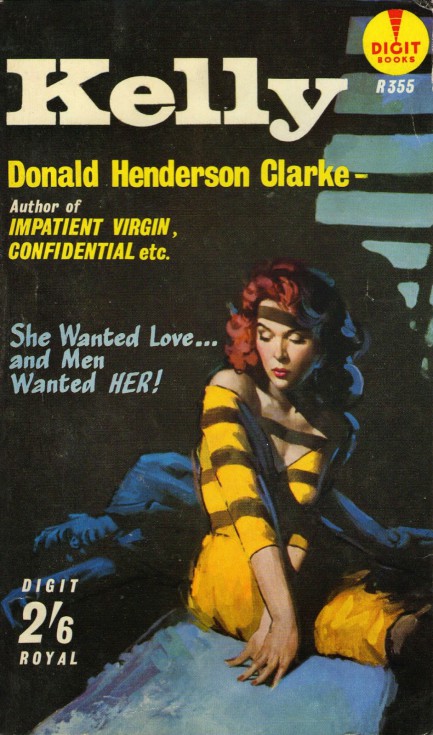 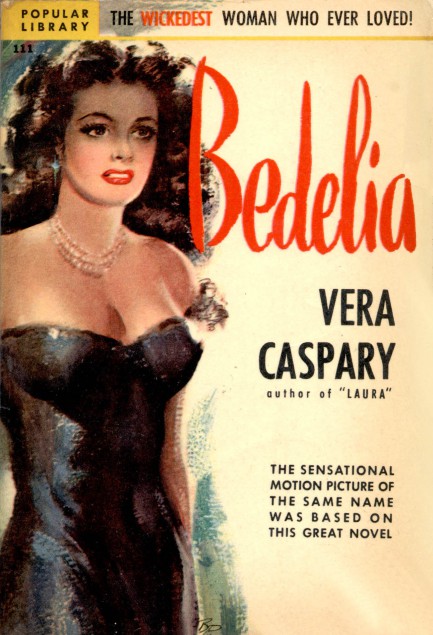 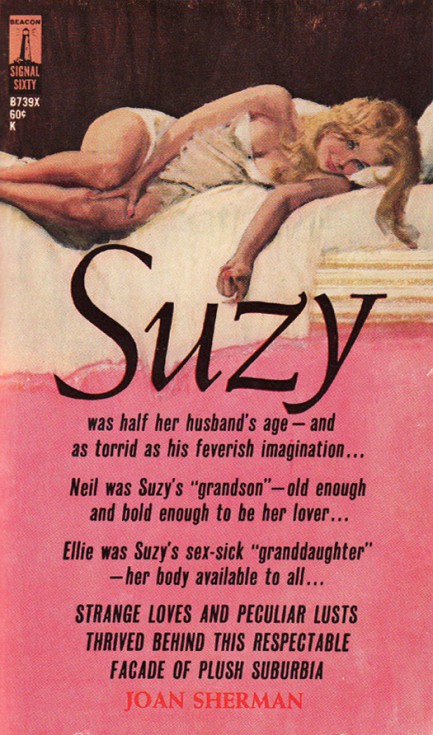 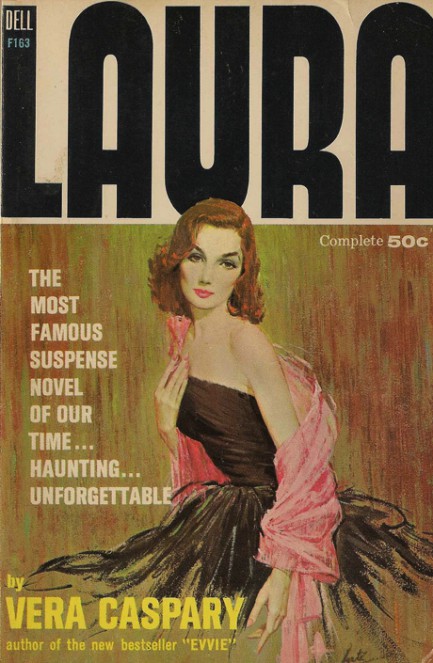 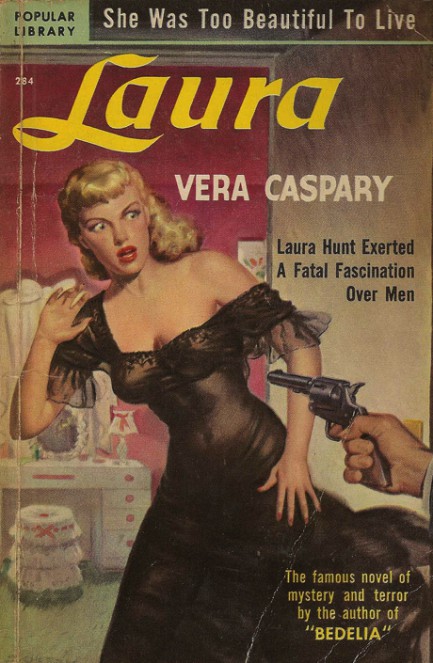 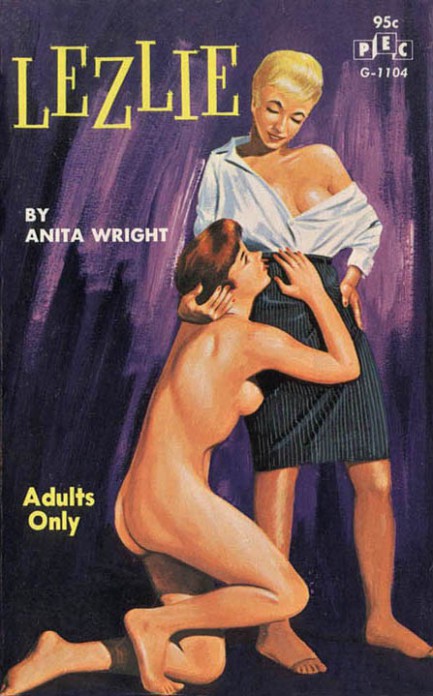 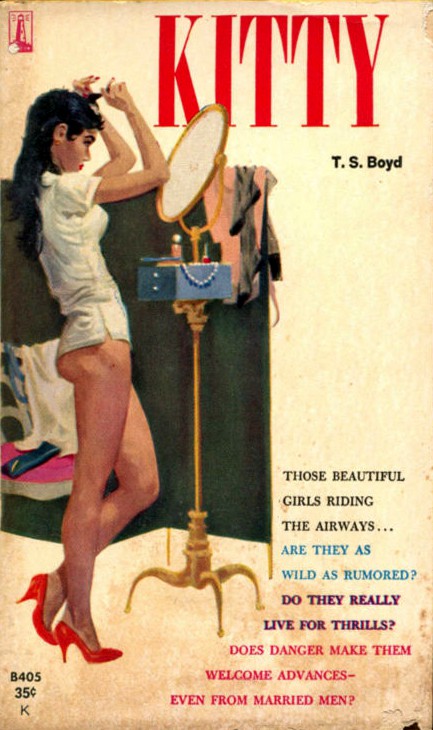 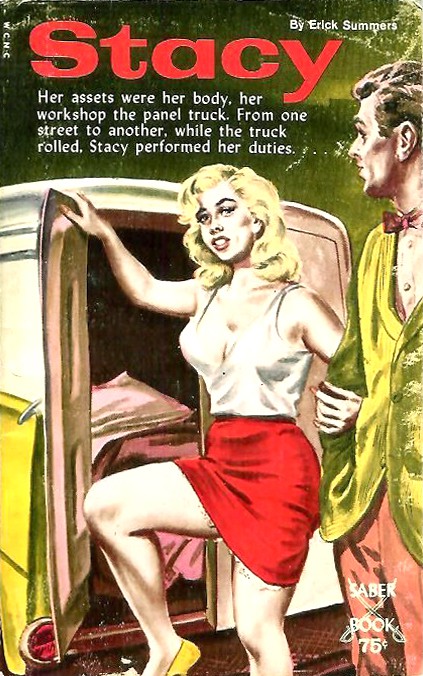 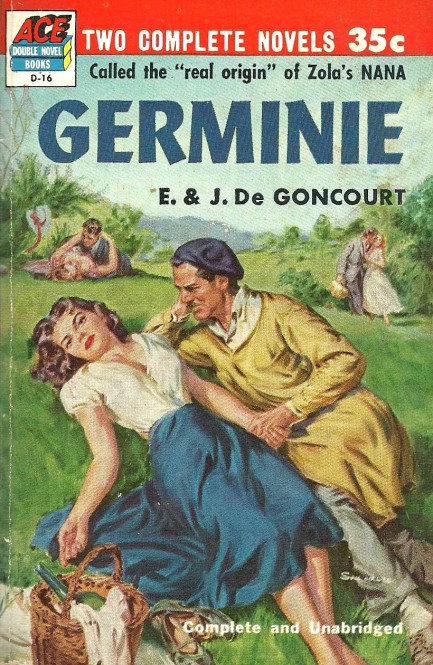 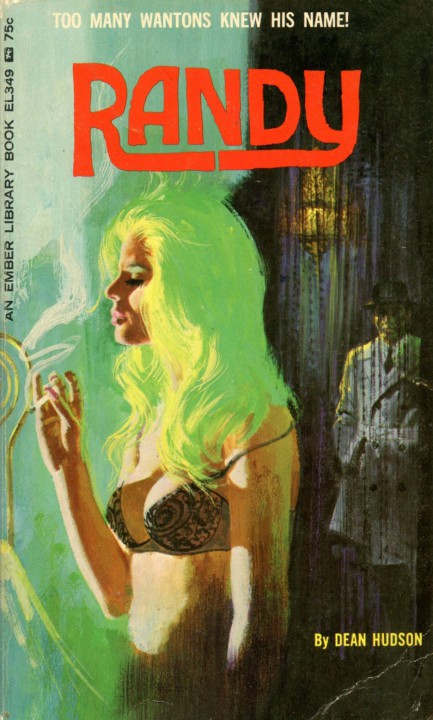 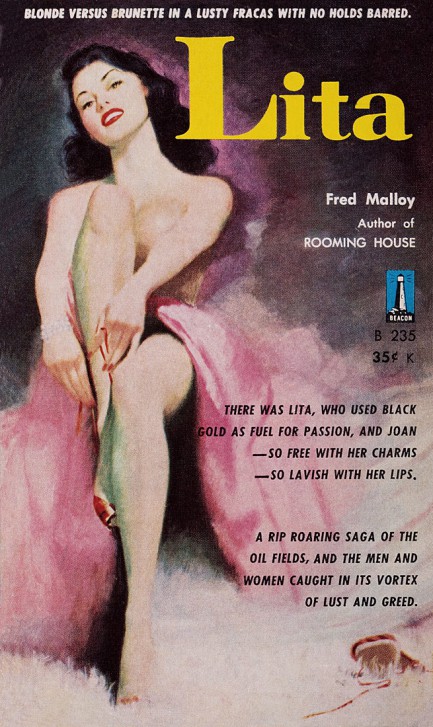 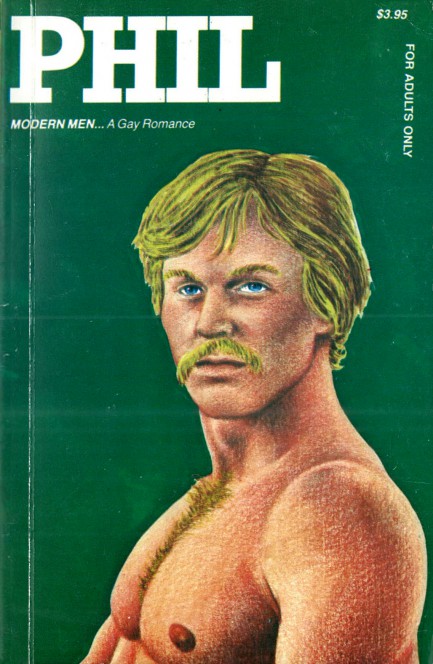
 A zebra amongst the predators. 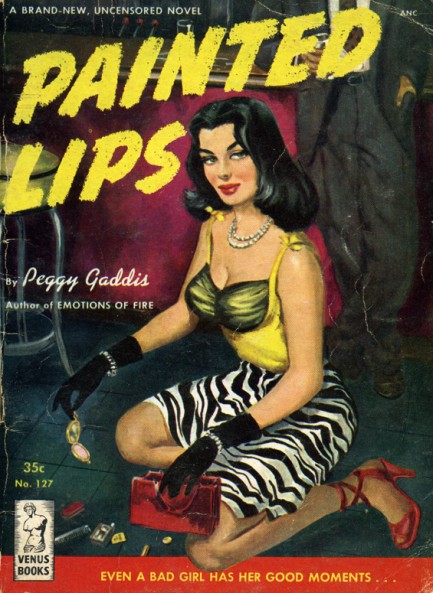
Erolie Pearl Gaddis Dern wrote as Joan Sherman, Joan Tucker, Pearl Gaddis, Peggy Dern, and for this 1951 romance Painted Lips decided to use her best known moniker—Peggy Gaddis. Gaddis was prolific, publishing dozens of romances and nurse novels between 1929 and 1966. This particular book follows the various dramas of a habitual homewrecker. We love the cover femme fatale, with her zebra skirt and wacky bodice. This would have been an absolutely insane outfit for 1951, so we wonder if the artist simply dreamed it up. We can’t answer that, though, because the art is uncredited. We think that was the modus operandi at Venus Books, because we’ve seen quite a few of their releases—including a couple with covers obviously by this same talented painter—with no attribution. Shame. But we’ll try to dig up more info on a possible artist anyway. There’s always someone out there who knows.
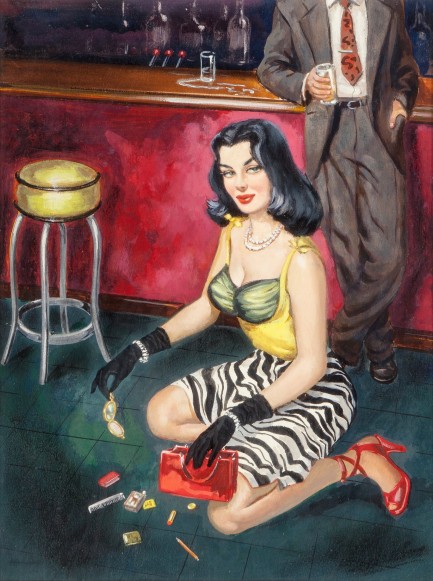
 Well, I need a man, but I guess you’ll have to do. 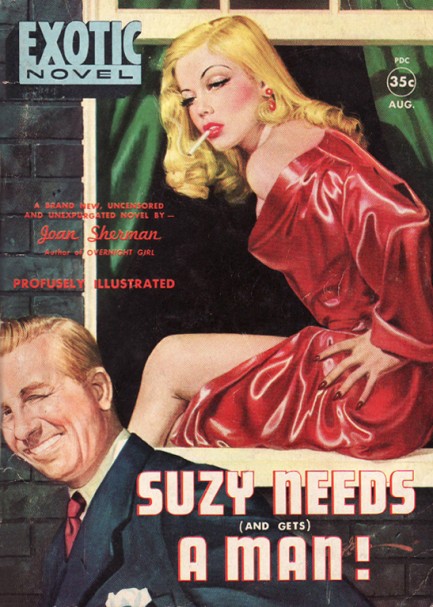
This is a brilliant cover for Joan Sherman’s, aka Peggy Gaddis Dern's Suzy Needs a Man, published 1950. Dern was an extremely prolific author who between 1934 and 1966 wrote under many names, producing mostly romances, nurse novels, and light sleaze. The art here is by the great George Gross, who painted hundreds of covers for every pulp imprint from Detective Book Magazine to Football Stories. We’ll get back to Gross a bit later, but in the meantime you can see more of his work here.
|
 |

The headlines that mattered yesteryear.
1947—Heyerdahl Embarks on Kon-Tiki
Norwegian ethnographer and adventurer Thor Heyerdahl and his five man crew set out from Peru on a giant balsa wood raft called the Kon-Tiki in order to prove that Peruvian natives could have settled Polynesia. After a 101 day, 4,300 mile (8,000 km) journey, Kon-Tiki smashes into the reef at Raroia in the Tuamotu Islands on August 7, 1947, thus demonstrating that it is possible for a primitive craft to survive a Pacific crossing. 1989—Soviets Acknowledge Chernobyl Accident
After two days of rumors and denials the Soviet Union admits there was an accident at the Chernobyl nuclear power plant in Ukraine. Reactor number four had suffered a meltdown, sending a plume of radioactive fallout into the atmosphere and over an extensive geographical area. Today the abandoned radioactive area surrounding Chernobyl is rife with local wildlife and has been converted into a wildlife sanctuary, one of the largest in Europe. 1945—Mussolini Is Arrested
Italian dictator Benito Mussolini, his mistress Clara Petacci, and fifteen supporters are arrested by Italian partisans in Dongo, Italy while attempting to escape the region in the wake of the collapse of Mussolini's fascist government. The next day, Mussolini and his mistress are both executed, along with most of the members of their group. Their bodies are then trucked to Milan where they are hung upside down on meathooks from the roof of a gas station, then spat upon and stoned until they are unrecognizable. 1933—The Gestapo Is Formed
The Geheime Staatspolizei, aka Gestapo, the official secret police force of Nazi Germany, is established. It begins under the administration of SS leader Heinrich Himmler in his position as Chief of German Police, but by 1939 is administered by the Reichssicherheitshauptamt, or Reich Main Security Office, and is a feared entity in every corner of Germany and beyond. 1937—Guernica Is Bombed
In Spain during the Spanish Civil War, the Basque town of Guernica is bombed by the German Luftwaffe, resulting in widespread destruction and casualties. The Basque government reports 1,654 people killed, while later research suggests far fewer deaths, but regardless, Guernica is viewed as an example of terror bombing and other countries learn that Nazi Germany is committed to that tactic. The bombing also becomes inspiration for Pablo Picasso, resulting in a protest painting that is not only his most famous work, but one the most important pieces of art ever produced.
|

|
|

It's easy. We have an uploader that makes it a snap. Use it to submit your art, text, header, and subhead. Your post can be funny, serious, or anything in between, as long as it's vintage pulp. You'll get a byline and experience the fleeting pride of free authorship. We'll edit your post for typos, but the rest is up to you. Click here to give us your best shot.

|
|

